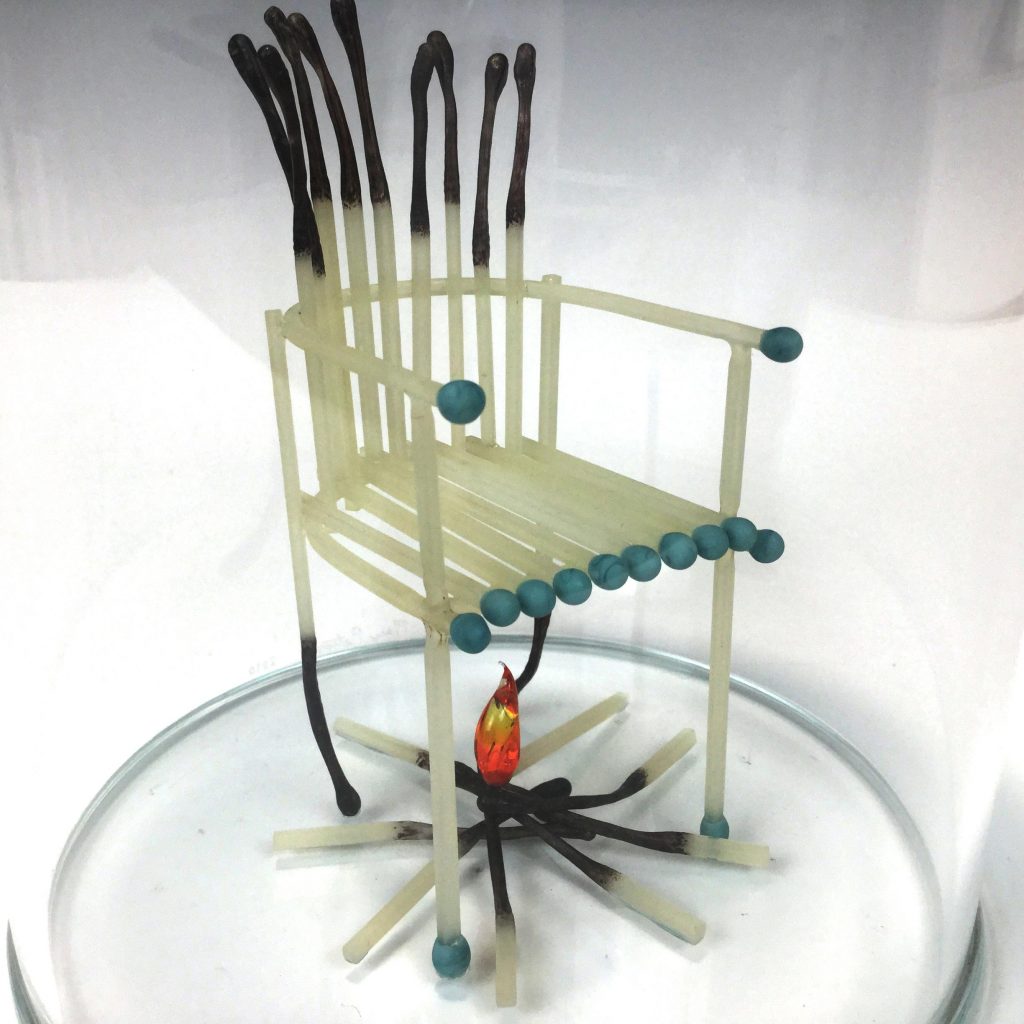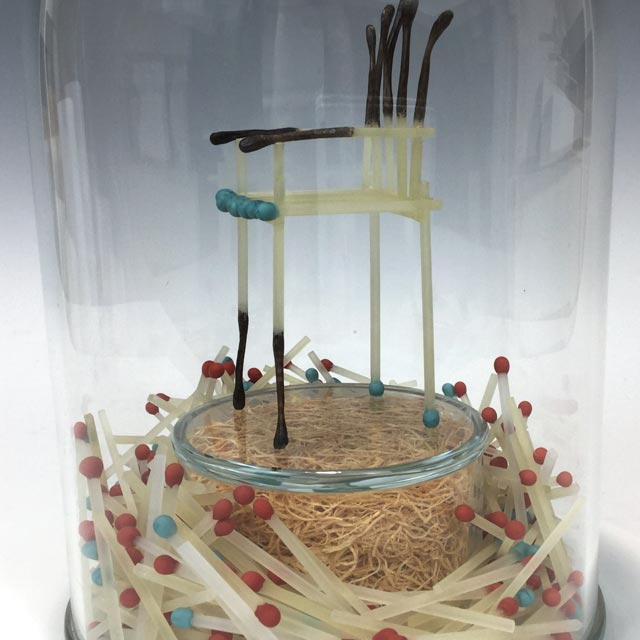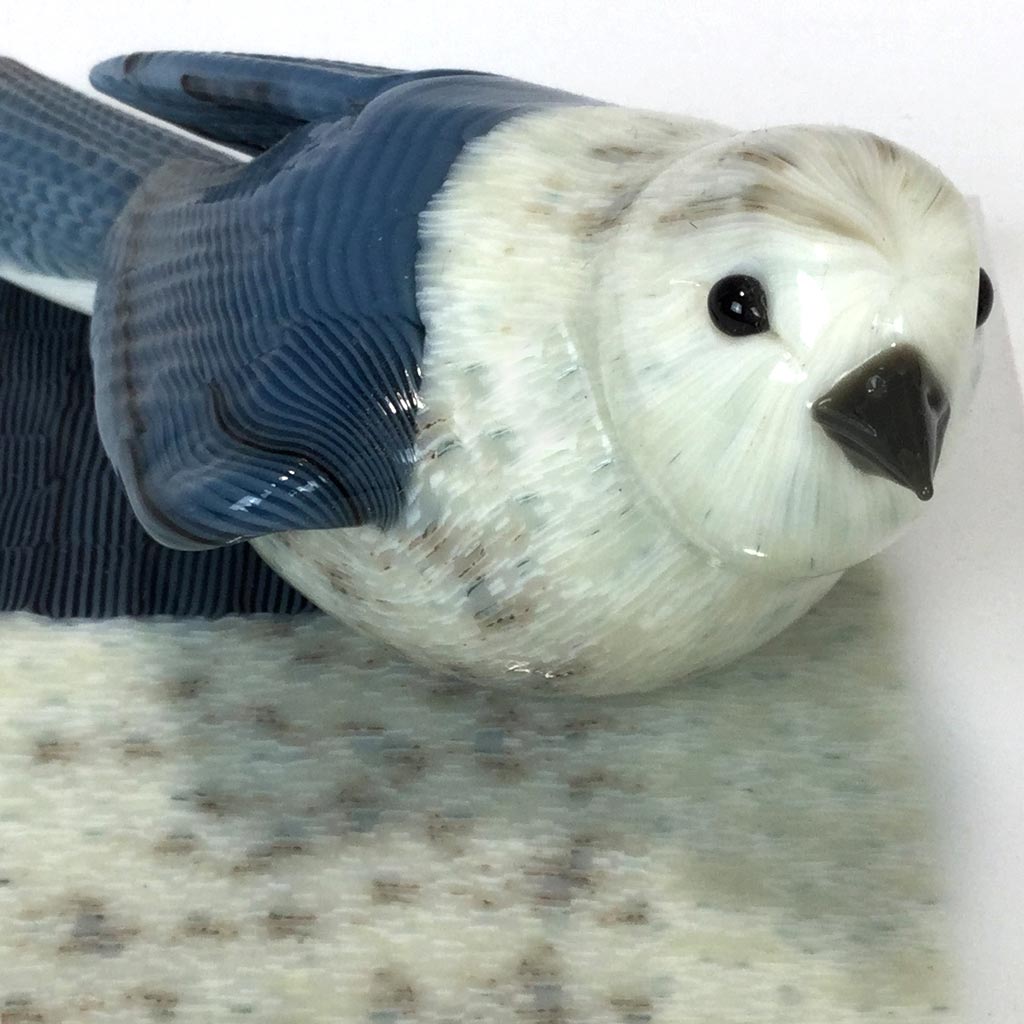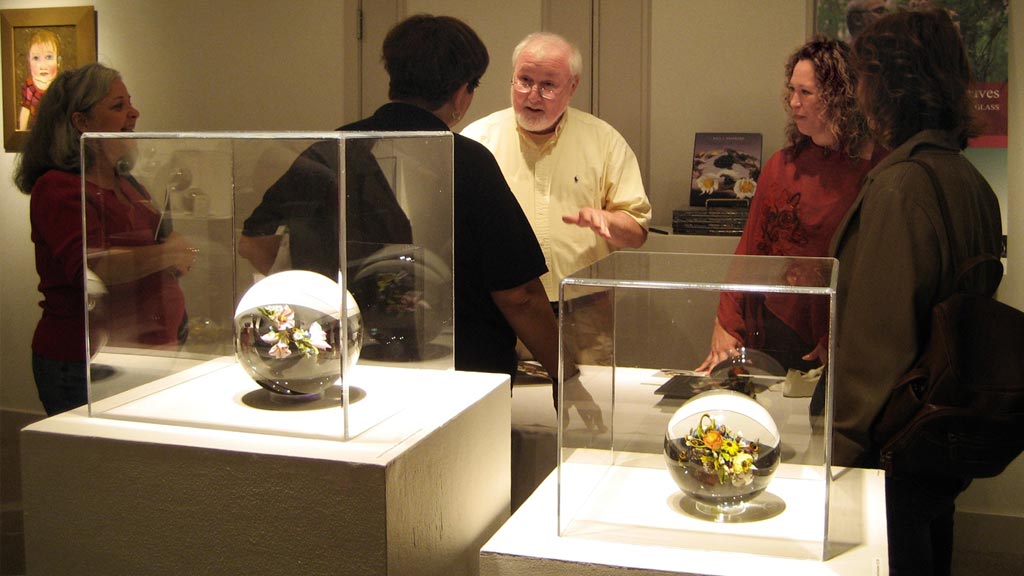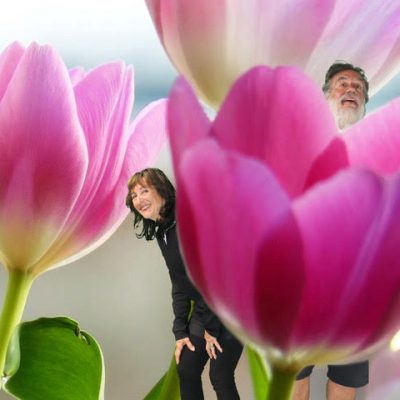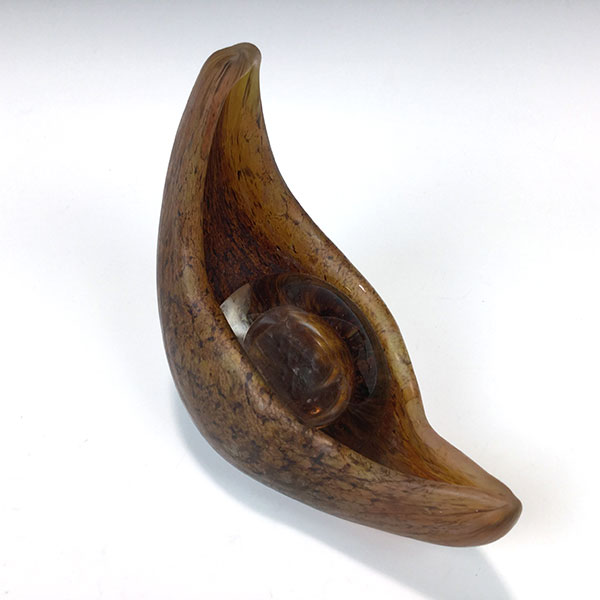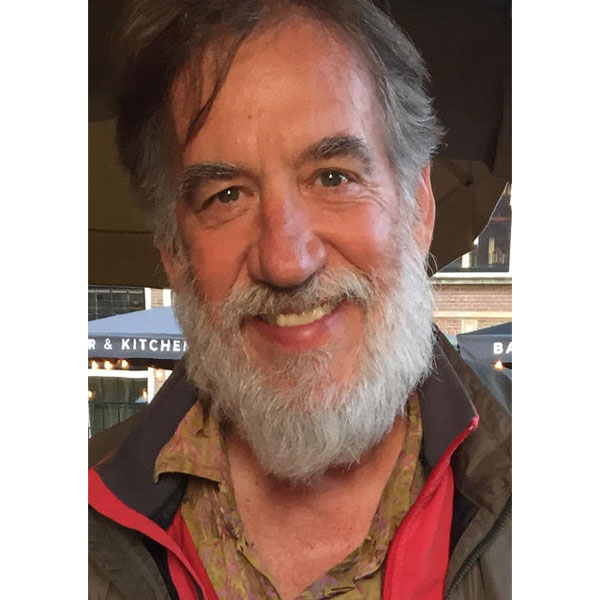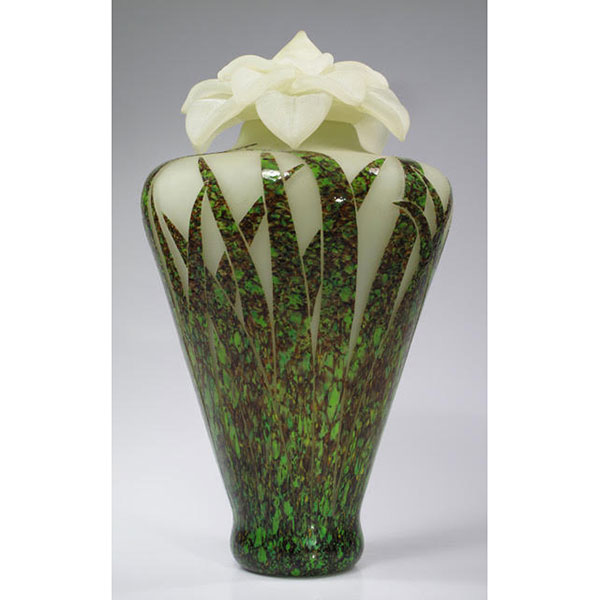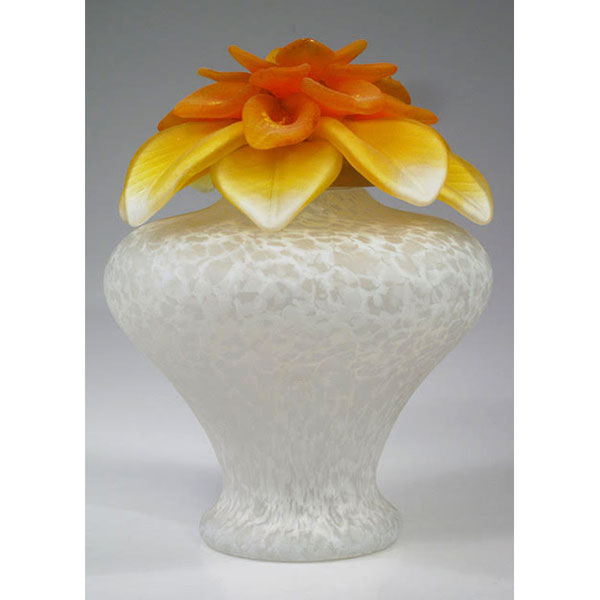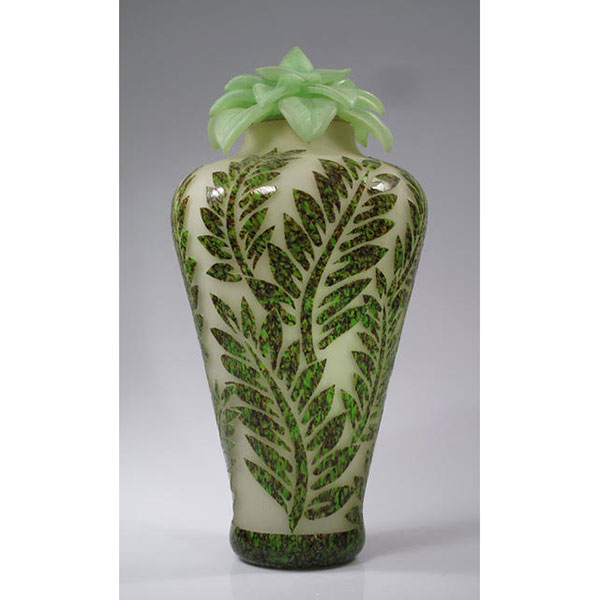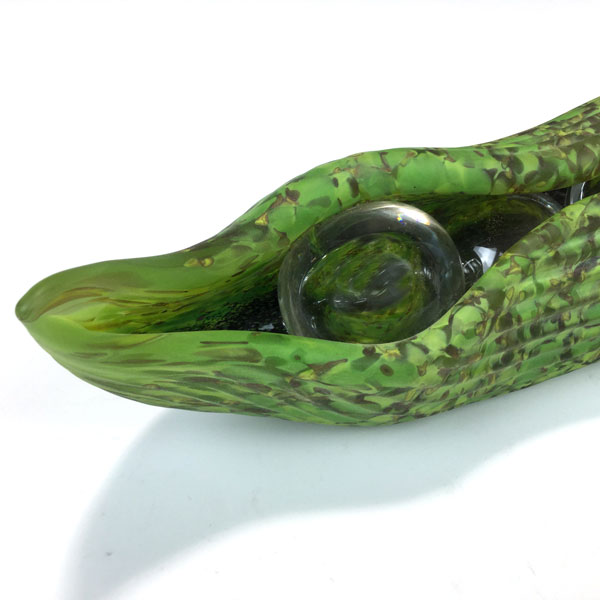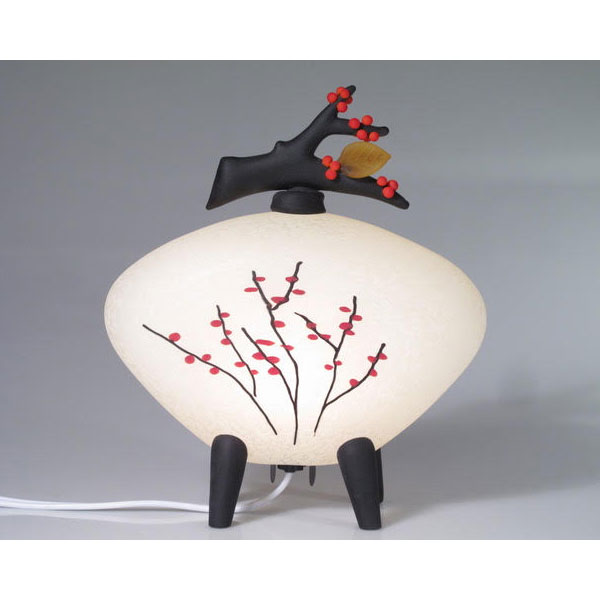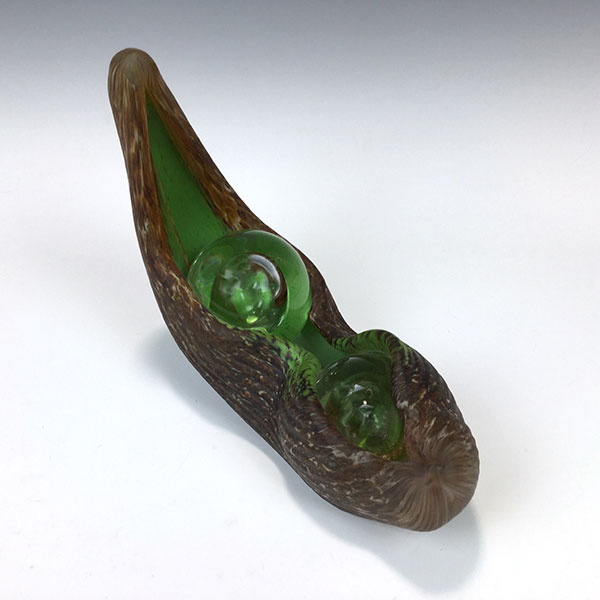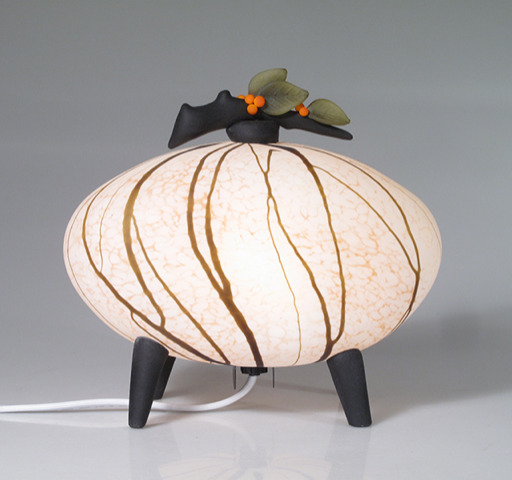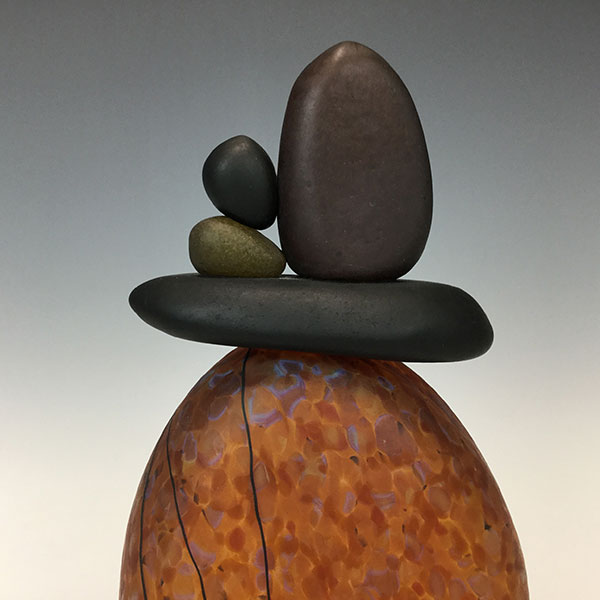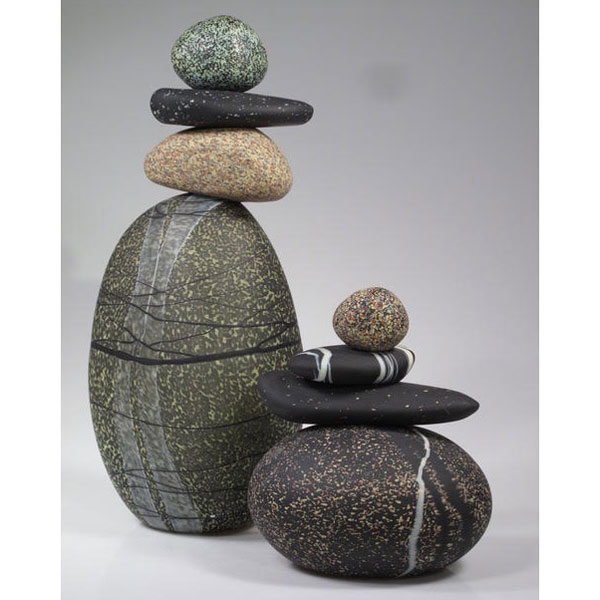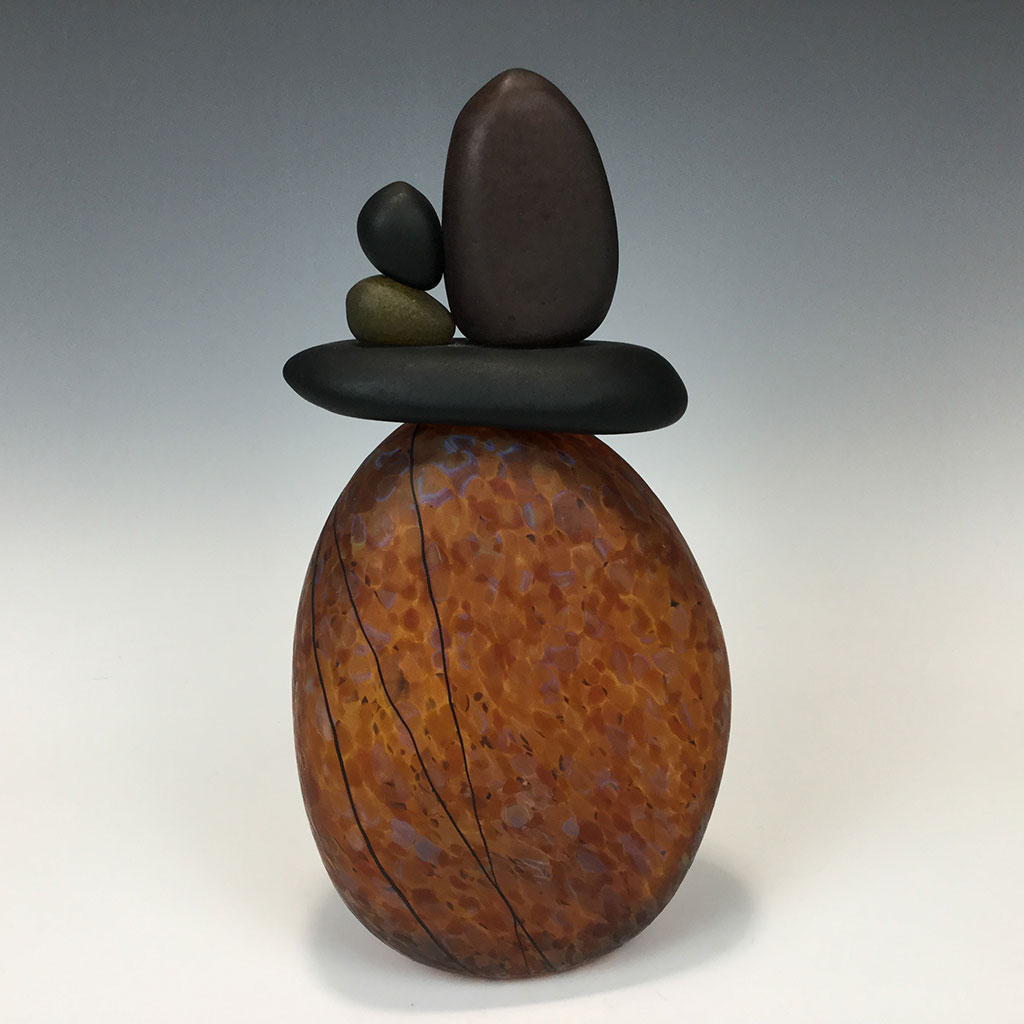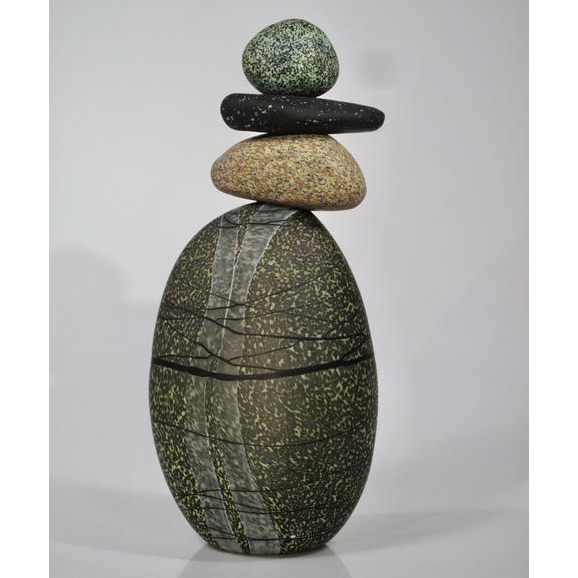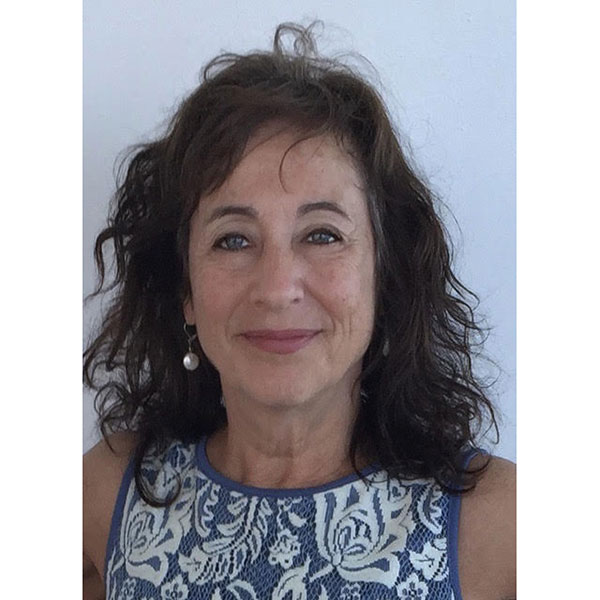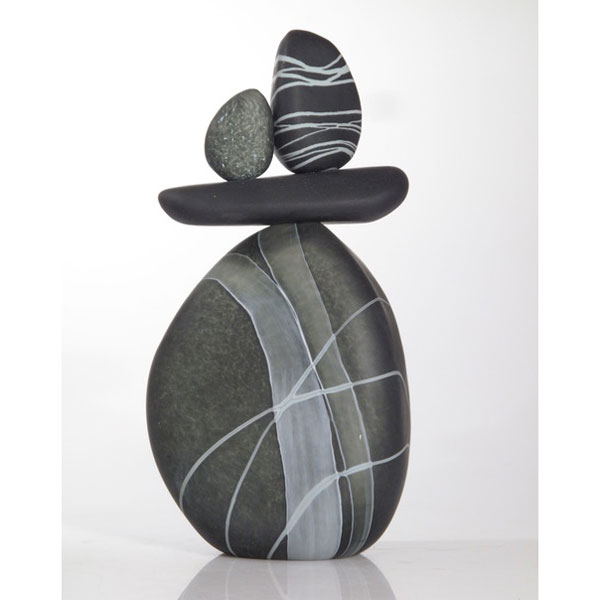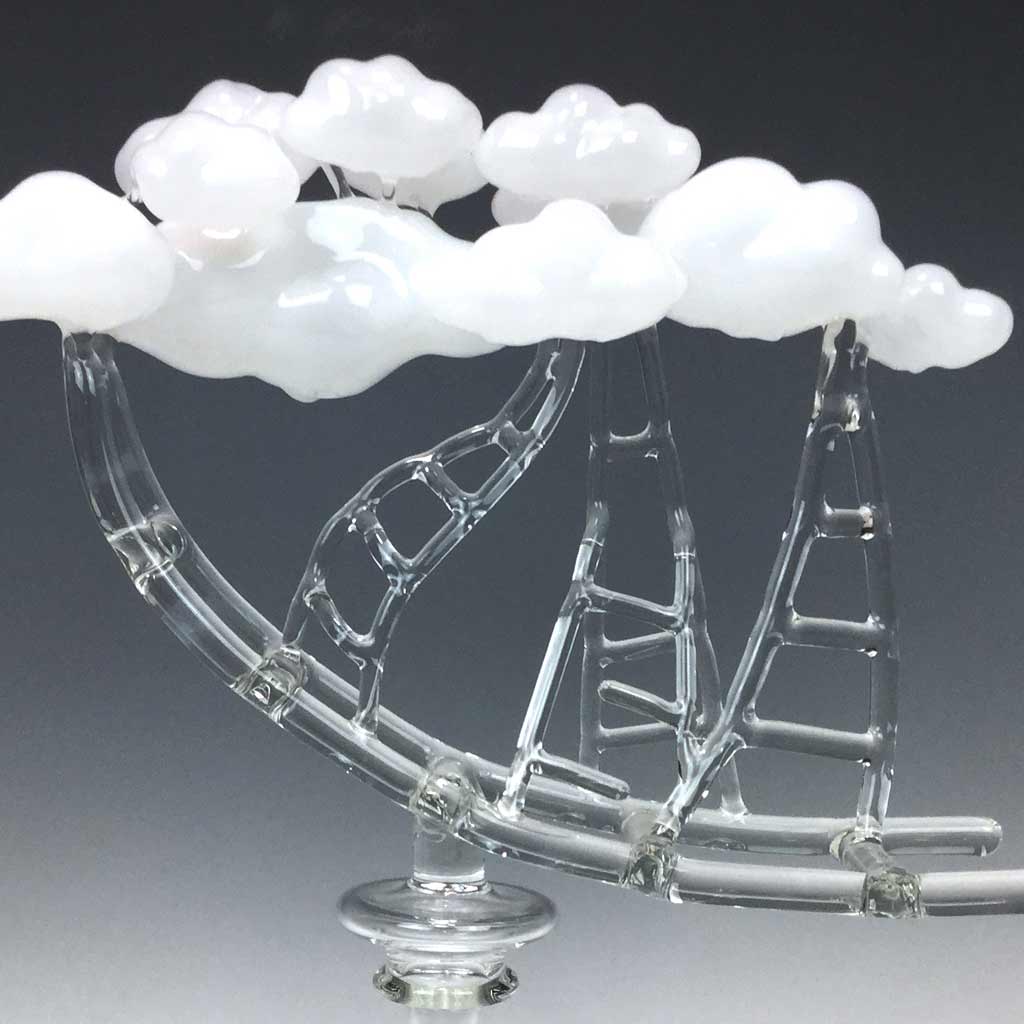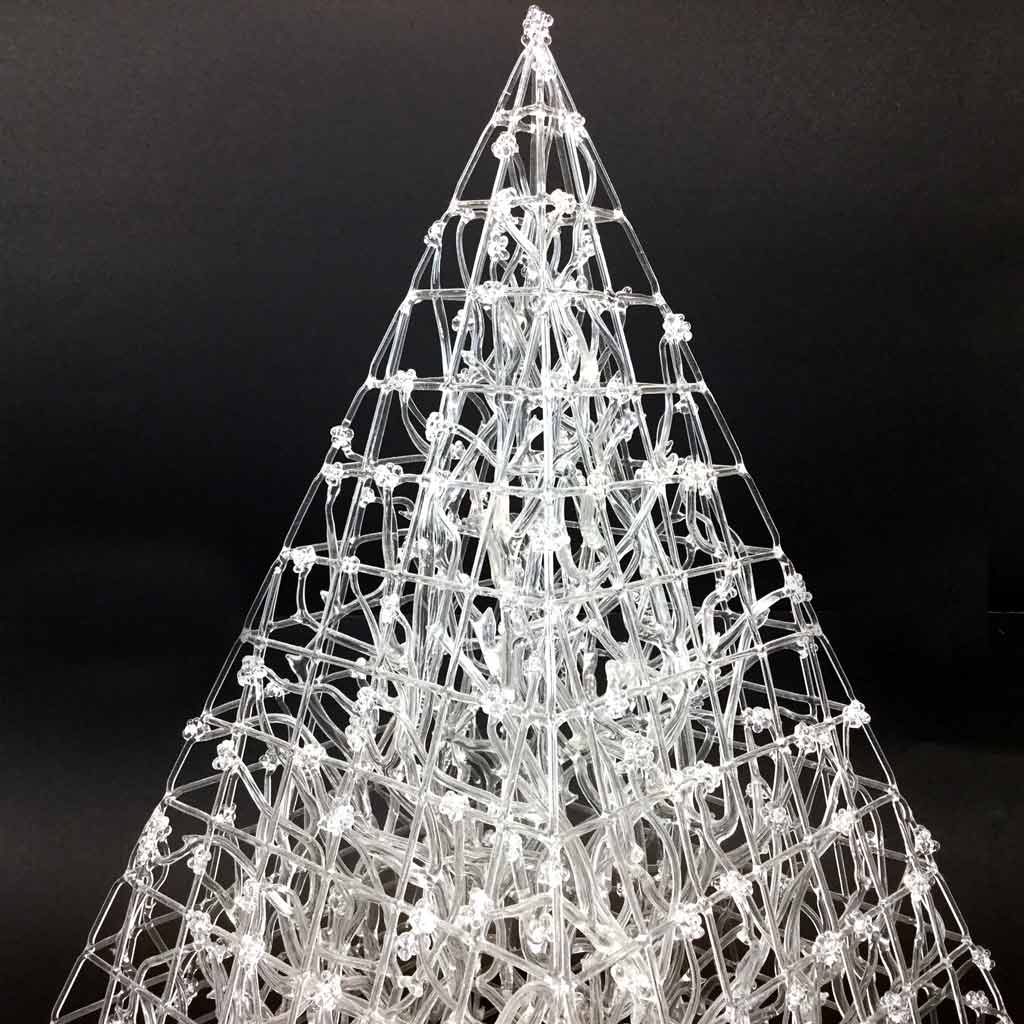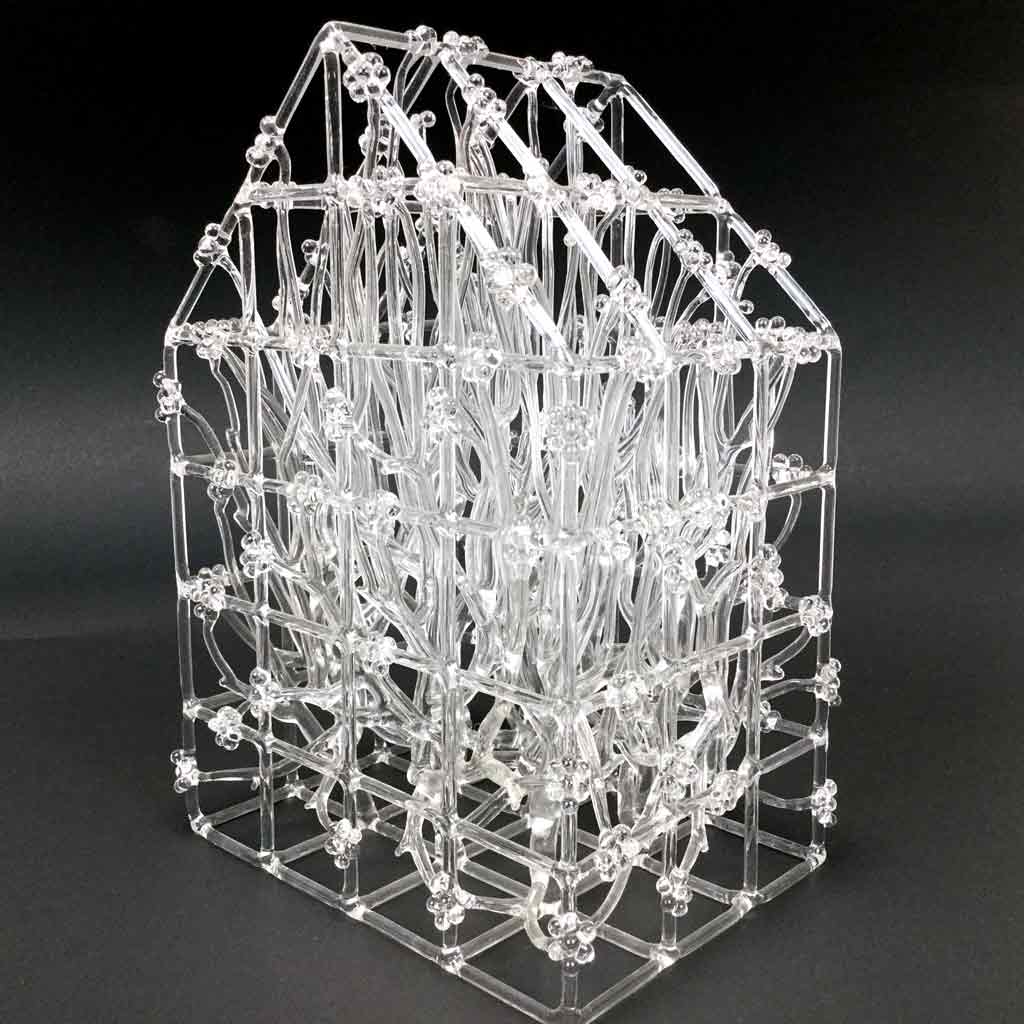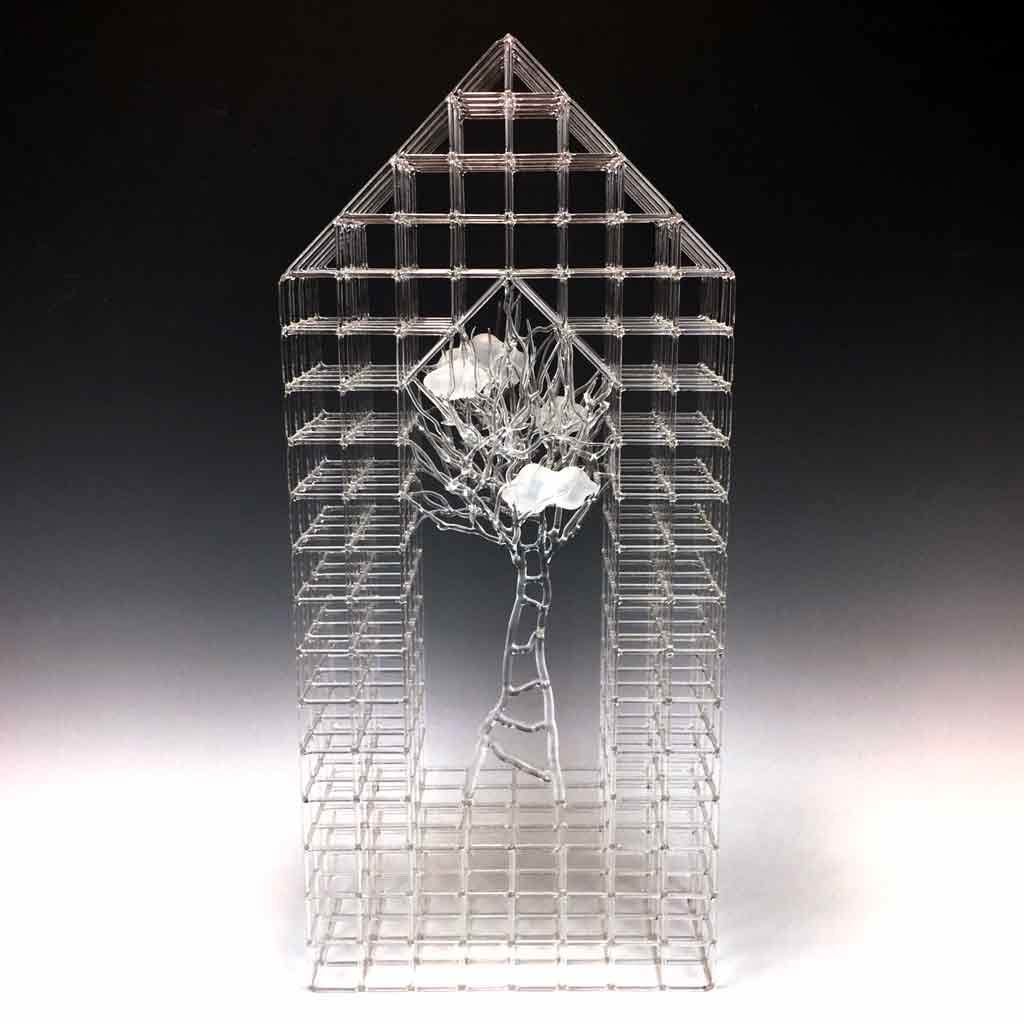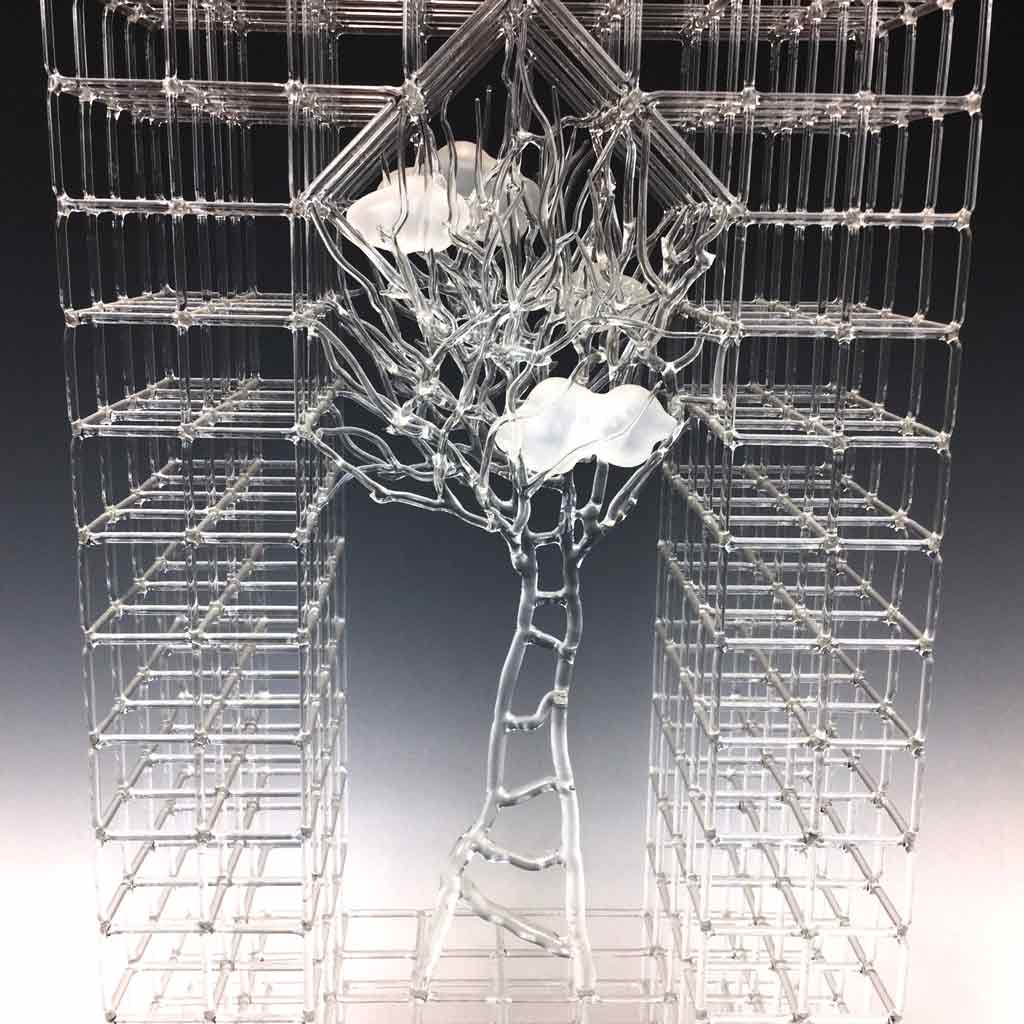Artist Spotlight: Amy Peseller
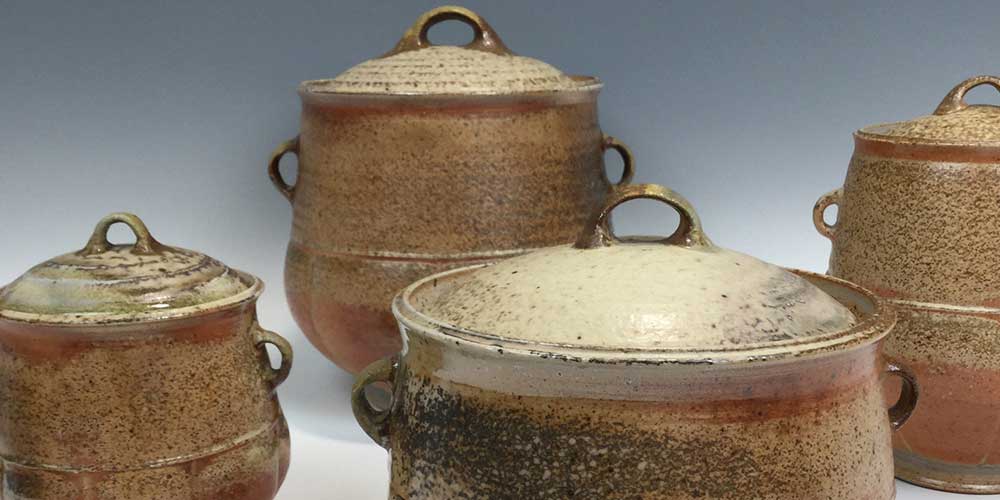
Artist Spotlight: Terry Plasket
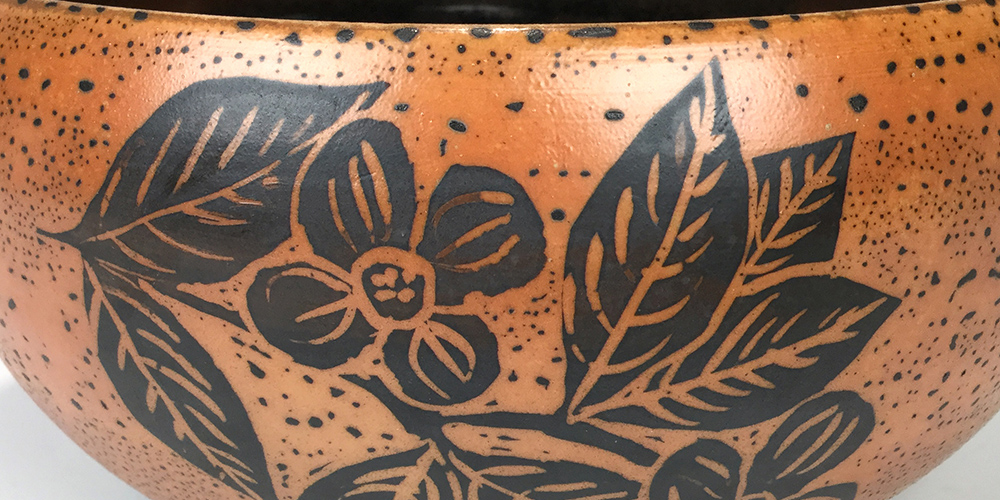
Women In Glass

In celebration of Women’s History Month, we would like to take the time to recognize some of the female glass artists we represent in The Gallery of Fine Craft. The gallery is fortunate to have a longstanding connection with each in one form or another.
These artists continue to push the boundaries of technique, creativity, and imagery. Explore their narratives and themes with us.
Megumi Esaki, born in Japan currently resides in France
An independent artist living in Nagoya, Japan, Megumi Esaki is a graduate of Aichi University’s Department of Arts and Crafts. Among her laurels, Megumi has been the recipient of a scholarship to the Pilchuck Glass School in Seattle, WA, and was the top awardee at the Toyota Art Exhibition. She was awarded the Creative Glass Center of America Fellowship in 2001. Her current work in cast glass and water — with its focus on refinement of technique, form, and function — is reminiscent of ritual containers used in Japanese gardens.
Artist Statement
I apply organic shapes to create my imagery. I pile on many layers, building the form to create each structure. I like to reference the composition of plants as I see a rhythm in them that follows mathematical rules. I enjoy its rhythm and resonance. When I see things that I am attracted to I see their shadows. And when looking into water or a mirror I prefer to see its reflection and the reflected images. I enjoy creating those reflected images, that subtle existence.
Shop WheatonArts – The Gallery of Fine Craft for Megumi’s work
Ayako Ikeda, born in Japan currently resides in the US
Ayako Ikeda was born in Kumamoto, Japan. She received her BA and MA degrees in living design and architecture from The University of Shiga Prefecture in Japan. Ayako’s glass art studies began in 2001 at the Toyama City Institute of Glass Art, the first public institution in Japan specializing in glass art. After completing her studies in 2003, she traveled extensively and worked with many glass artists from all over the world. Her work is shown internationally in Japan and the United States. It has been in several group exhibitions, including the Enomoto Gallery at Osaka and Milestone Gallery at Toyama.
In her personal work, Ikeda blows vases that are gracefully simple and traditional in shape; however, she moves beyond the typical in her exacting technical process. She layers colors over one another, almost mimicking the layering of lacquer which is later carved, but using greater contrast in color. When the blown glass has been annealed, Ikeda uses a Dremel grinding tool to carve linear images through the layers of color. A swelling, teardrop-shaped vase from the “KIKU” series is a deep peony pink on the outside. The flowers’ simple outlines cut through the translucent pink and an opaque white layer into a dark base color. The whole transparent rosy exterior is made pinker by the underlying white.
Shop WheatonArts – The Gallery of Fine Craft for Ayako’s work
Chicaco Ogawa, born and currently resides in Japan
Chicaco Ogawa was born and grew up in Aichi, Japan. After graduating from the Aichi University of Education in 1998, she worked at a production studio, and now she works at Toyama City Institute of Glass Art as a teaching assistant. She is interested in human expression and drawing lines. From an everyday affair, she finds something.
In 2010, Chica was awarded a fellowship with the Creative Glass Center of America at WheatonArts. After completing her fellowship, Chica remained as part of our production team as an assistant in the WheatonArts Glass Studio. After a few years at Wheaton, she moved back to Japan, where she currently resides.
Shop WheatonArts – The Gallery of Fine Craft for Chica’s work
Kari Russell-Pool, currently resides in Ohio.
Artist Statement
FLAMEWORKER, MOTHER, WIFE – I communicate using objects as metaphors. I am interested in the stories objects tell and how we elevate them into heirlooms, from quilts and teapots to sailors’ valentines and cages. My work tells many stories, filled with unique personal content and commentary about society, the hard work of relationships, and my experience as a mom. The result is autobiographical, and although objects are my vehicle, I think of them as self-portraits as each series reflects the timely concerns of my life.
Primarily a flame worker, I approach my work in a painterly fashion. Pulling my own cane and coloring it with glass powders allows for crossover between the hot shop and the torch and the occasional collaboration with my husband, Marc Petrovic. Together we share a studio in Cleveland, Ohio.
I have taught numerous workshops and classes both in the United States and abroad. My work can be seen in many private and public collections. Museums displaying my work include the Charlotte Mint Museum of Craft and Design, the Chrysler Museum of Art, the Cincinnati Museum of Art, the Corning Museum of Glass, the Racine Art Museum, the Seattle Museum of Art, the Smithsonian Museum of American Art, and the Tacoma Museum of Glass.
Shop WheatonArts – The Gallery of Fine Craft for Kari’s work
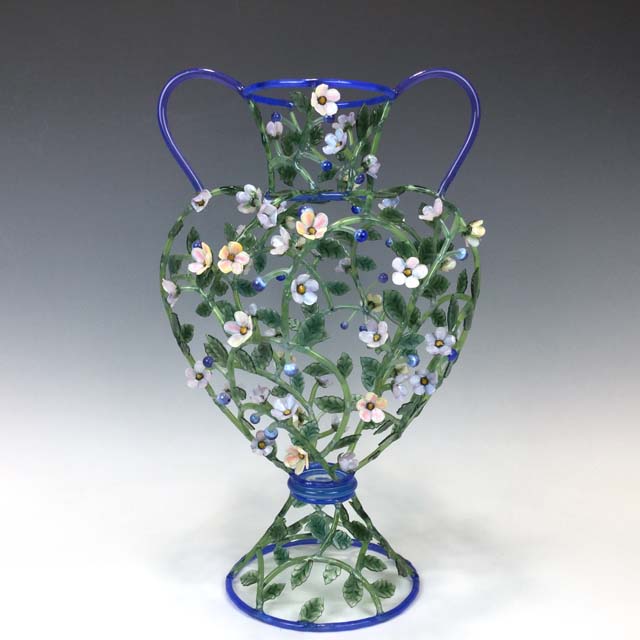
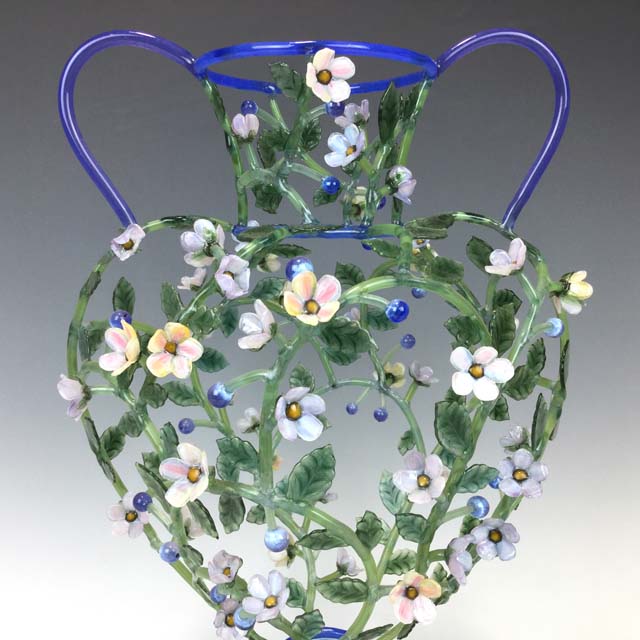

Winner_s Trophy by Kari Russell-Pool-DETAIL
Go back to the Blog Home Page
Artist Spotlight: Eric Goldschmidt
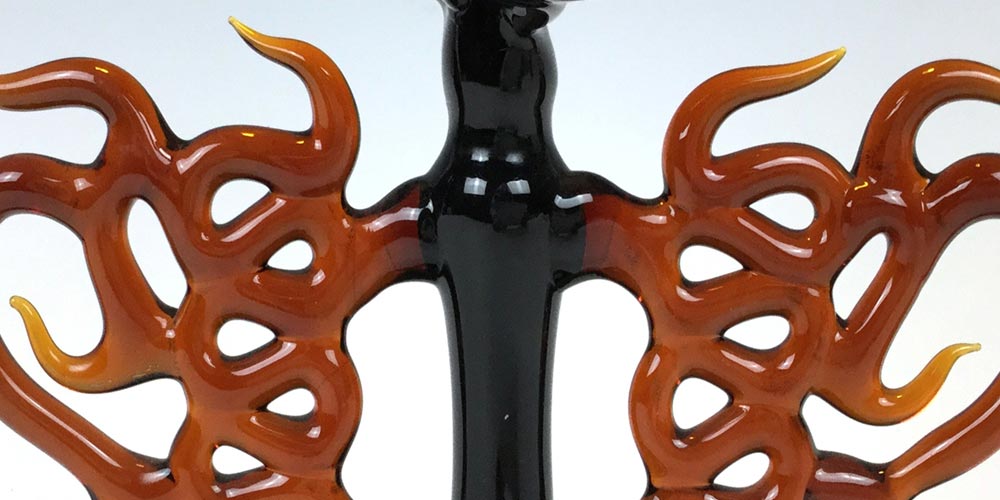
Artist Introduction by Noele Alampi
Manager, The Gallery of Fine Craft
When I first met Eric Goldschmidt in 2017, he was a Featured Presenter at the International Flameworking Conference at Salem County College. I was struck by his “Cage Cup” Series. These goblets and vessels feature fragmented face imagery surrounded by twisted vine-like “cages.” These cages create a more in-depth narrative beyond their traditional silhouettes. Eric has stated that this series is a “metaphor for the cages that we become entrapped in within our lives.” They draw the viewer in to find the deeper narrative.
Eric’s other line of work includes a series of elegant lidded goblets. Each has a removable lid accented with a delicate finial. The color palettes range in color from green to blue to purple. The set we are showcasing in The Gallery is a rich smoke gray color. They are truly stunning in the natural light of our bay window.
I always look forward to seeing what fantastic and inventive new work Eric will create next.
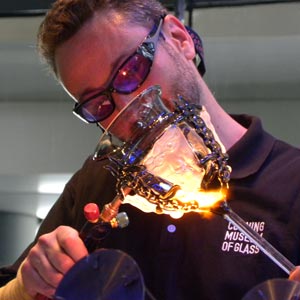 About Eric Goldschmidt
About Eric Goldschmidt
Since 1996, Eric Goldschmidt has devoted himself to practicing and developing hot glass techniques with a focus on flameworking while studying and assisting with many of the world’s most talented glass artists. Although he has been working with glass since 1996, Goldschmidt started working with molten materials in 1993 as a candlemaker. However, after witnessing flameworking, he became intrigued by the process, which led him to take classes from master flameworkers at The Studio of The Corning Museum of Glass. He was soon hooked and began working at The Studio in the Make Your Own Glass Workshop and as the resident flameworker. Now, as the properties of glass programs supervisor at the Museum, he gives live demonstrations in flameworking, glass breaking, and optical fiber, in addition to teaching, lecturing, and exhibiting his work around the world.
Shop WheatonArts The Gallery of Fine Craft for Eric Goldschmidt’s work
Artist Spotlight: Marc Petrovic

About The Gallery of Fine Craft
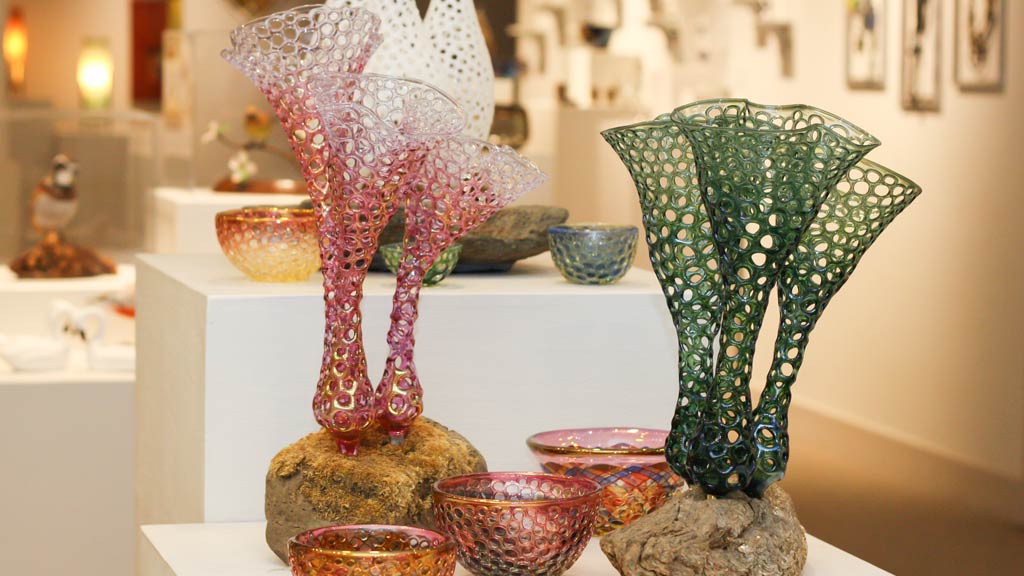
Artist Spotlight: David and Melanie Leppla

Artist Spotlight: Eunsuh Choi
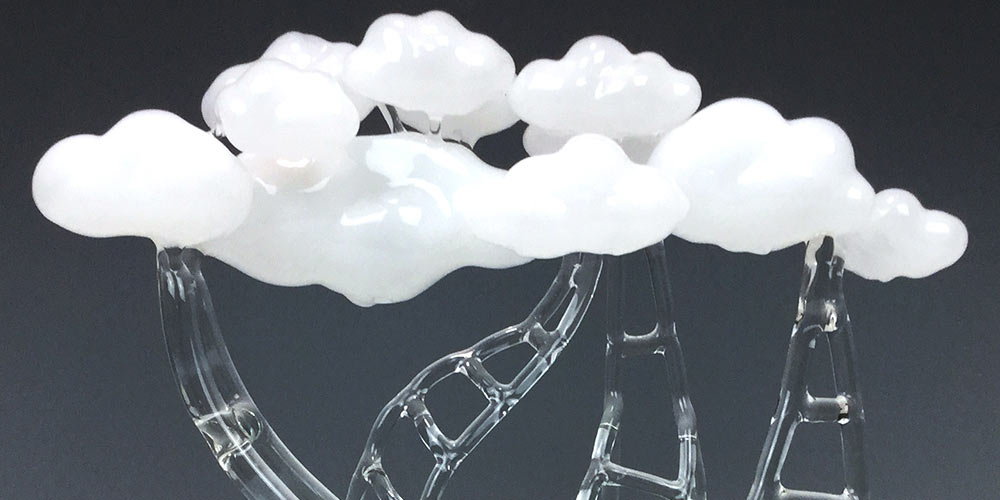

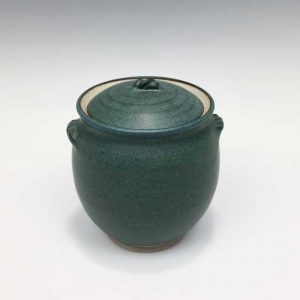
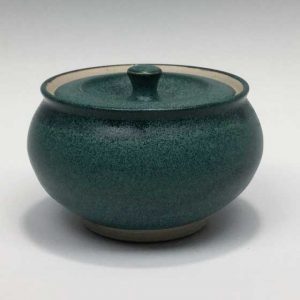
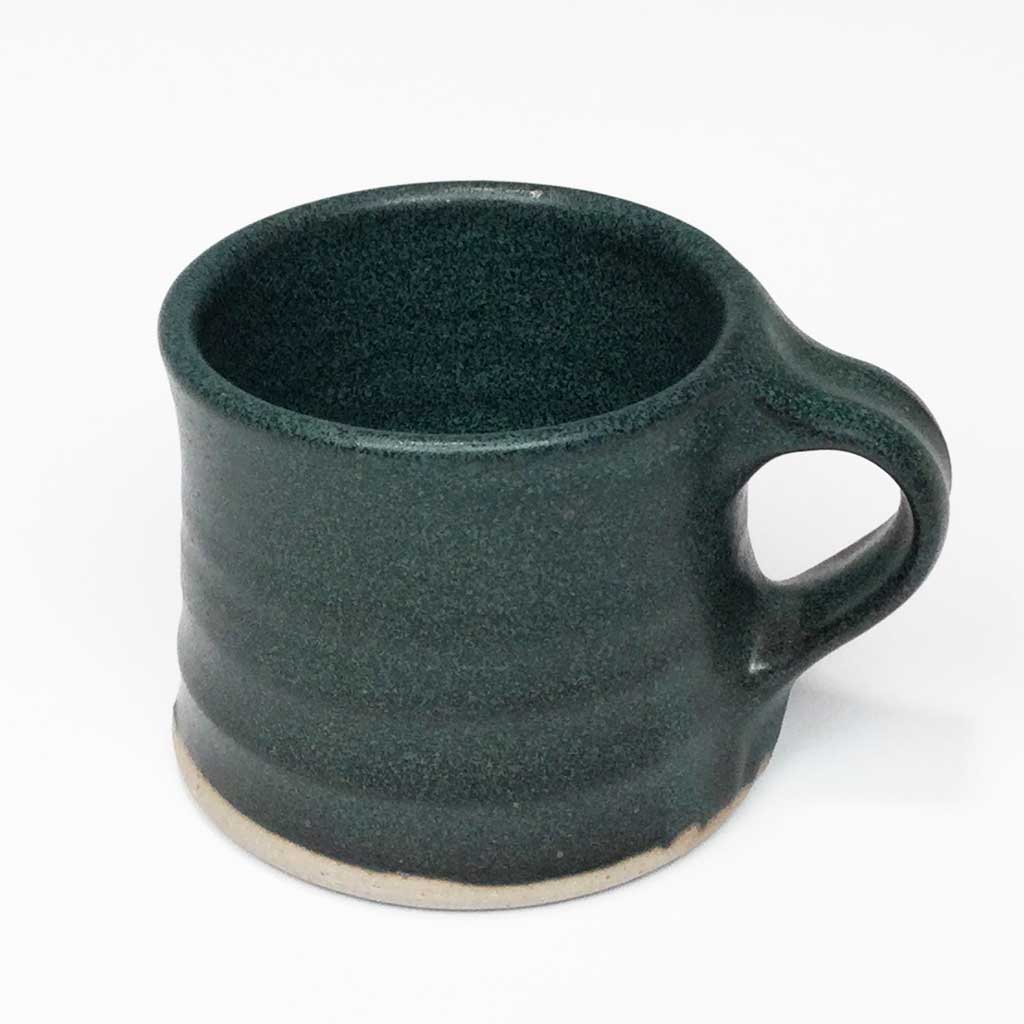

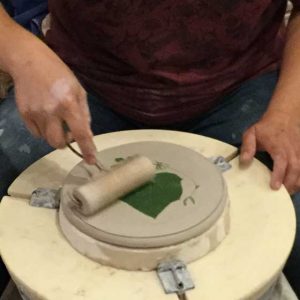
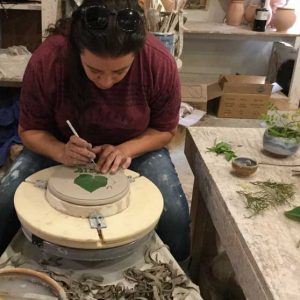
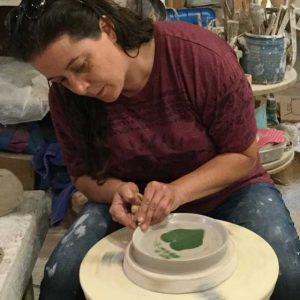
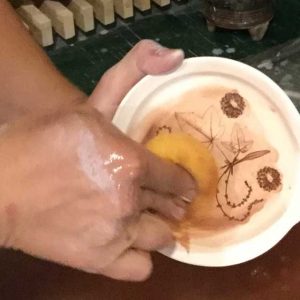
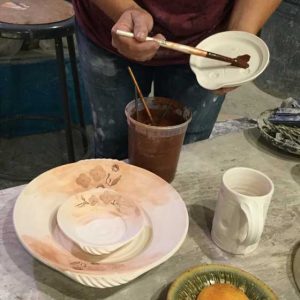
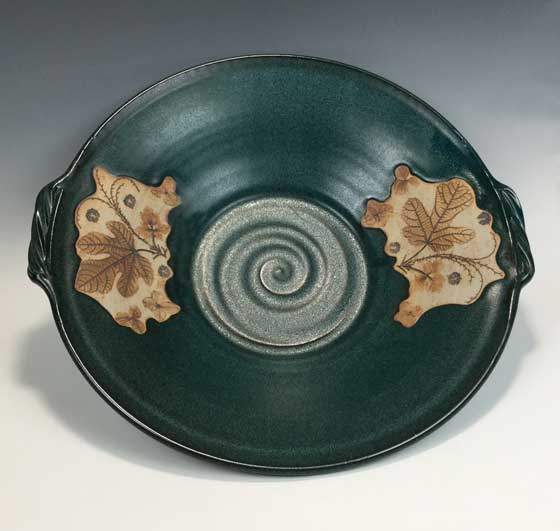

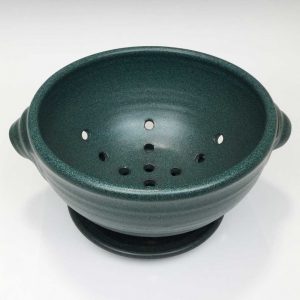

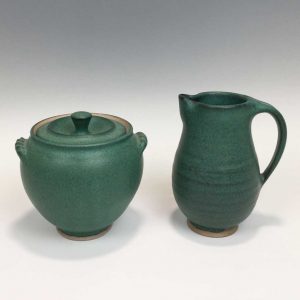
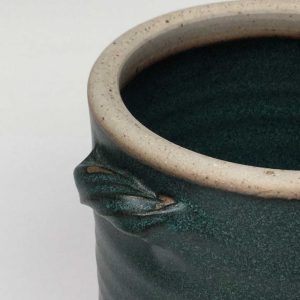
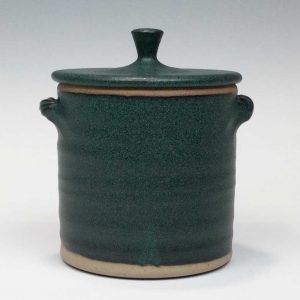
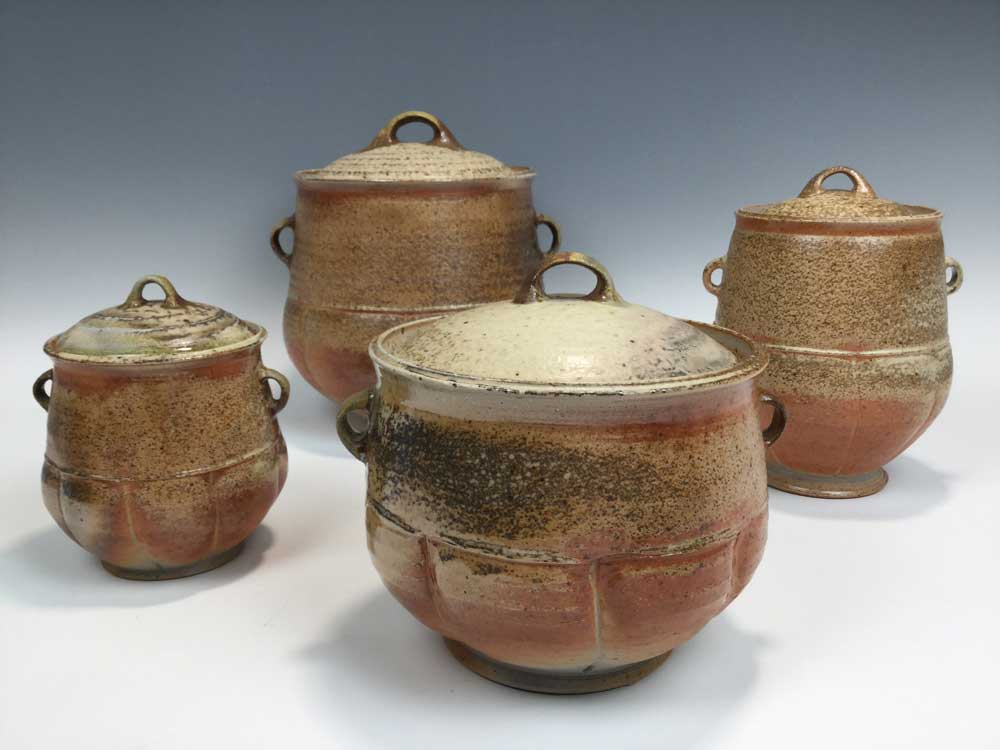

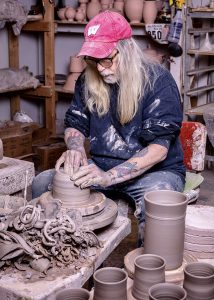 This year will mark 42 years of my tenure in the pottery at WheatonArts. Though I was introduced to salt glazing in college, it was here at WheatonArts that I have developed a line of work that has primarily been centered around the salt glaze process. For those who don’t know what salt glazing is, I can describe the process. Instead of applying the glaze to the pottery and fusing it on in the kiln, salt glazing finishes are created by the firing process. When it is dry in an electric kiln to 1800 degrees in an electric kiln, I first fire the ware, which hardens the clay, but it remains porous, much like a terra cotta flower pot. In this stage, I usually put a liner glaze on the insides of my pots. Though the outsides could remain untreated, I usually hand-paint designs on them using powdered metals such as iron, cobalt, and titanium mixed with water which then soaks into porous clay. The pots are then loaded into our gas-fired salt kiln and heated a second time to 2350 degrees F, at which time we throw ordinary rock salt into the bottom of the kiln. At this temperature, the salt immediately vaporizes. Some of the sodium from the salt will react with the silica in the clay forming a textured transparent glaze over the entire surface of the pots. Salting the kiln takes about two hours, and then the kiln is shut down and allowed to cool naturally for two days.
This year will mark 42 years of my tenure in the pottery at WheatonArts. Though I was introduced to salt glazing in college, it was here at WheatonArts that I have developed a line of work that has primarily been centered around the salt glaze process. For those who don’t know what salt glazing is, I can describe the process. Instead of applying the glaze to the pottery and fusing it on in the kiln, salt glazing finishes are created by the firing process. When it is dry in an electric kiln to 1800 degrees in an electric kiln, I first fire the ware, which hardens the clay, but it remains porous, much like a terra cotta flower pot. In this stage, I usually put a liner glaze on the insides of my pots. Though the outsides could remain untreated, I usually hand-paint designs on them using powdered metals such as iron, cobalt, and titanium mixed with water which then soaks into porous clay. The pots are then loaded into our gas-fired salt kiln and heated a second time to 2350 degrees F, at which time we throw ordinary rock salt into the bottom of the kiln. At this temperature, the salt immediately vaporizes. Some of the sodium from the salt will react with the silica in the clay forming a textured transparent glaze over the entire surface of the pots. Salting the kiln takes about two hours, and then the kiln is shut down and allowed to cool naturally for two days.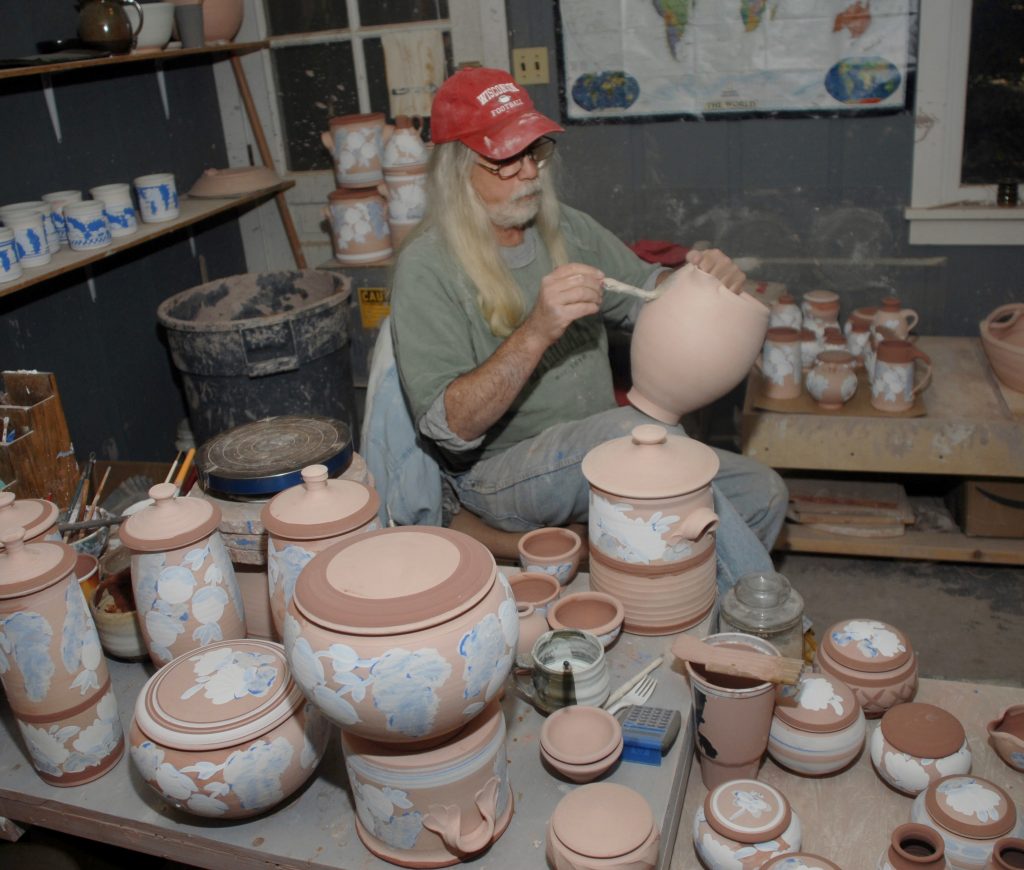
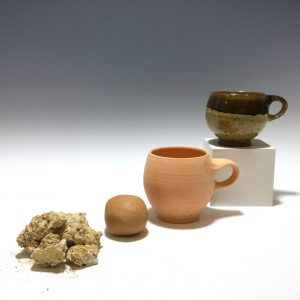 The second clay I have been using a lot of is a local clay from the site of Northeast Precast company bordering on Route 55 in Vineland, NJ. The owners, the Ruga family permitted me to mine clay on the site, and they graciously delivered like 20 tons of it behind our studio by the kilns. Potters refer to clay being mined locally like this as ‘Wild’ clay. We have to do some processing to the clay, which is labor-intensive but again, the rewarding aspect of using it outweighs the effort. I have found it to work best in our gas-fired glaze kiln and even more so in our woodfire kiln. Using local clay and firing it with local wood is such a primal process that creates a unique WheatonArts kind of ware. Though we have been experimenting with the clay and refining it for about two years, I feel like we still have a lot to learn about this clay body and its possibilities. It is an absolute joy to throw this clay on the potter’s wheel.
The second clay I have been using a lot of is a local clay from the site of Northeast Precast company bordering on Route 55 in Vineland, NJ. The owners, the Ruga family permitted me to mine clay on the site, and they graciously delivered like 20 tons of it behind our studio by the kilns. Potters refer to clay being mined locally like this as ‘Wild’ clay. We have to do some processing to the clay, which is labor-intensive but again, the rewarding aspect of using it outweighs the effort. I have found it to work best in our gas-fired glaze kiln and even more so in our woodfire kiln. Using local clay and firing it with local wood is such a primal process that creates a unique WheatonArts kind of ware. Though we have been experimenting with the clay and refining it for about two years, I feel like we still have a lot to learn about this clay body and its possibilities. It is an absolute joy to throw this clay on the potter’s wheel.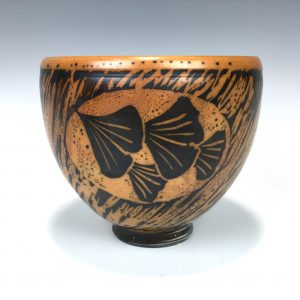
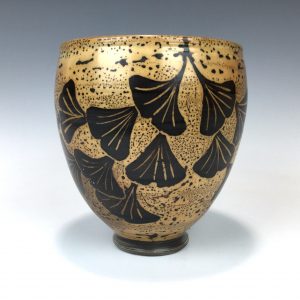

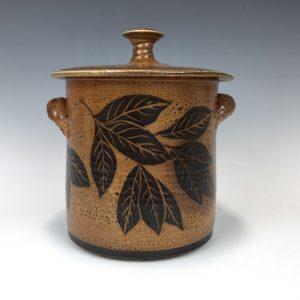
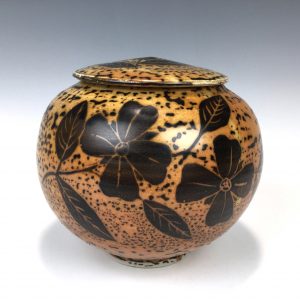
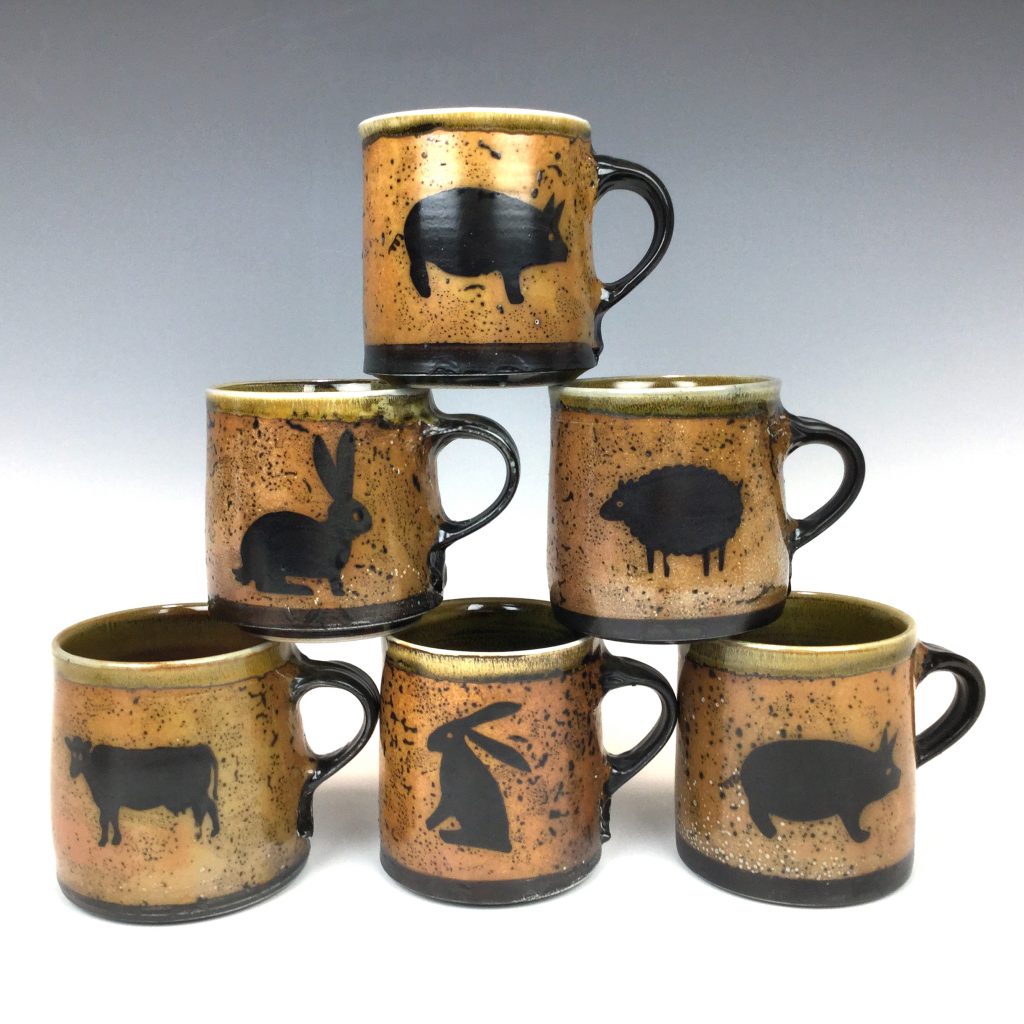
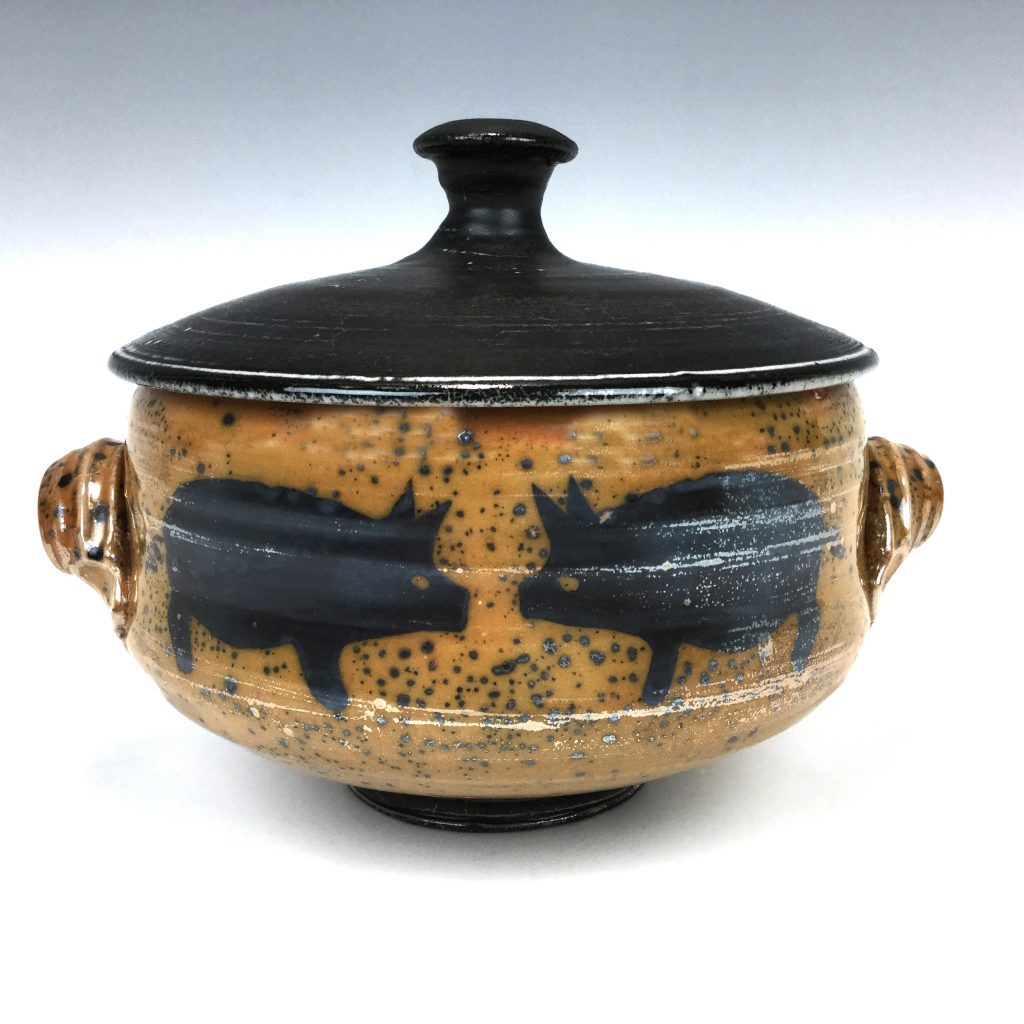
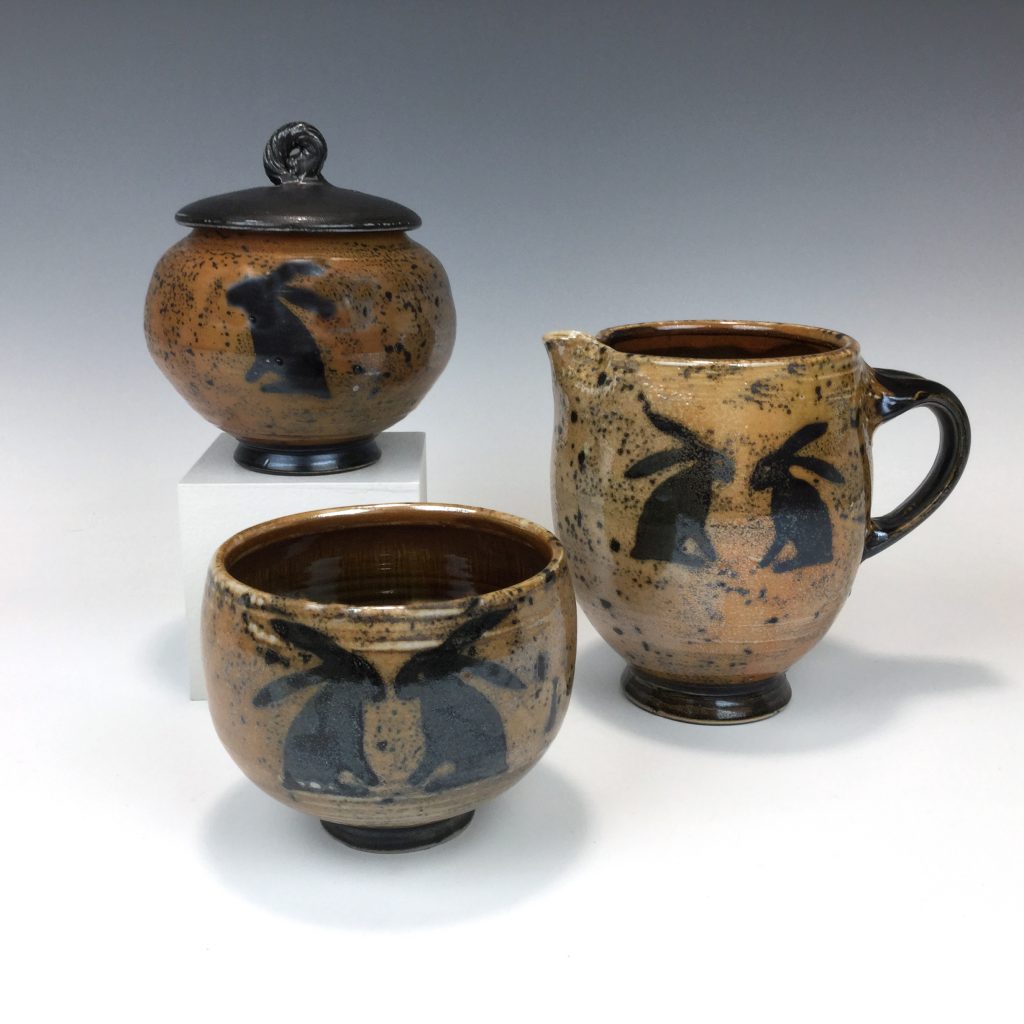


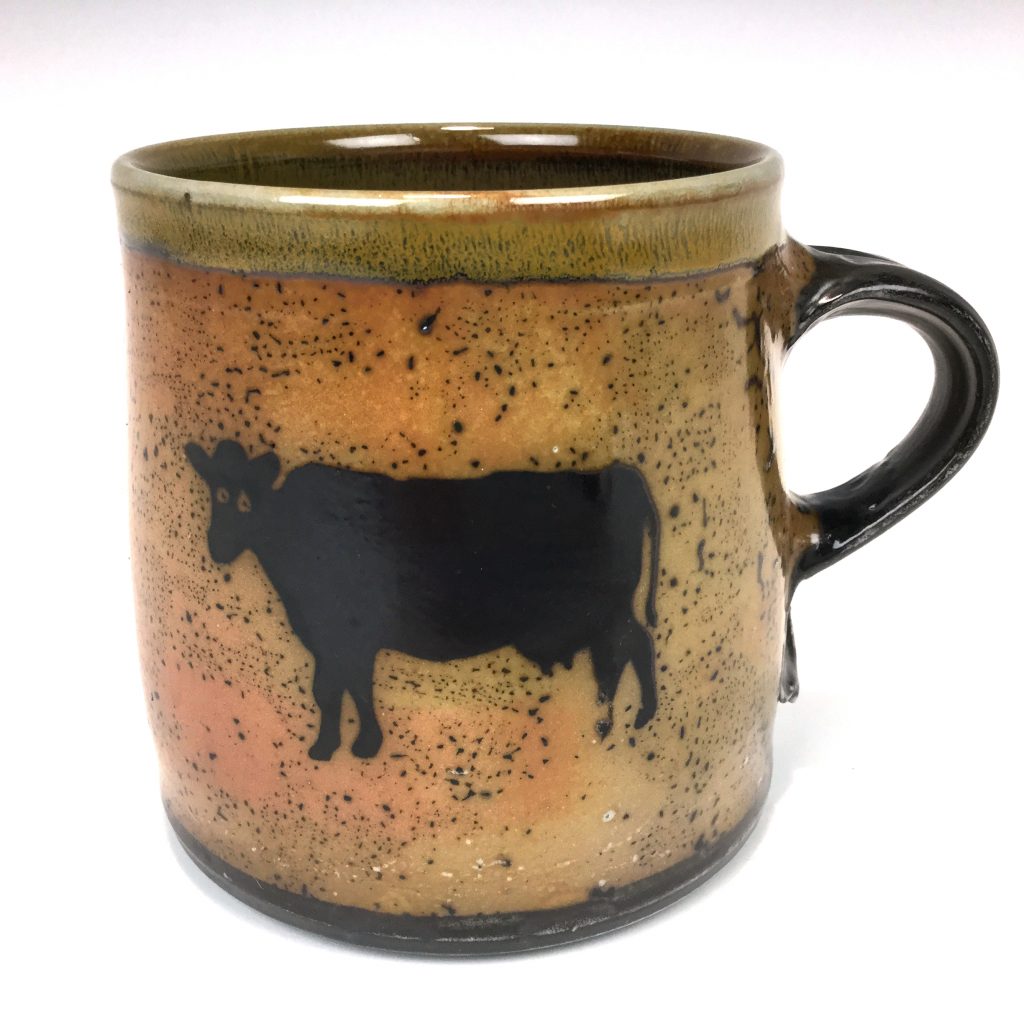
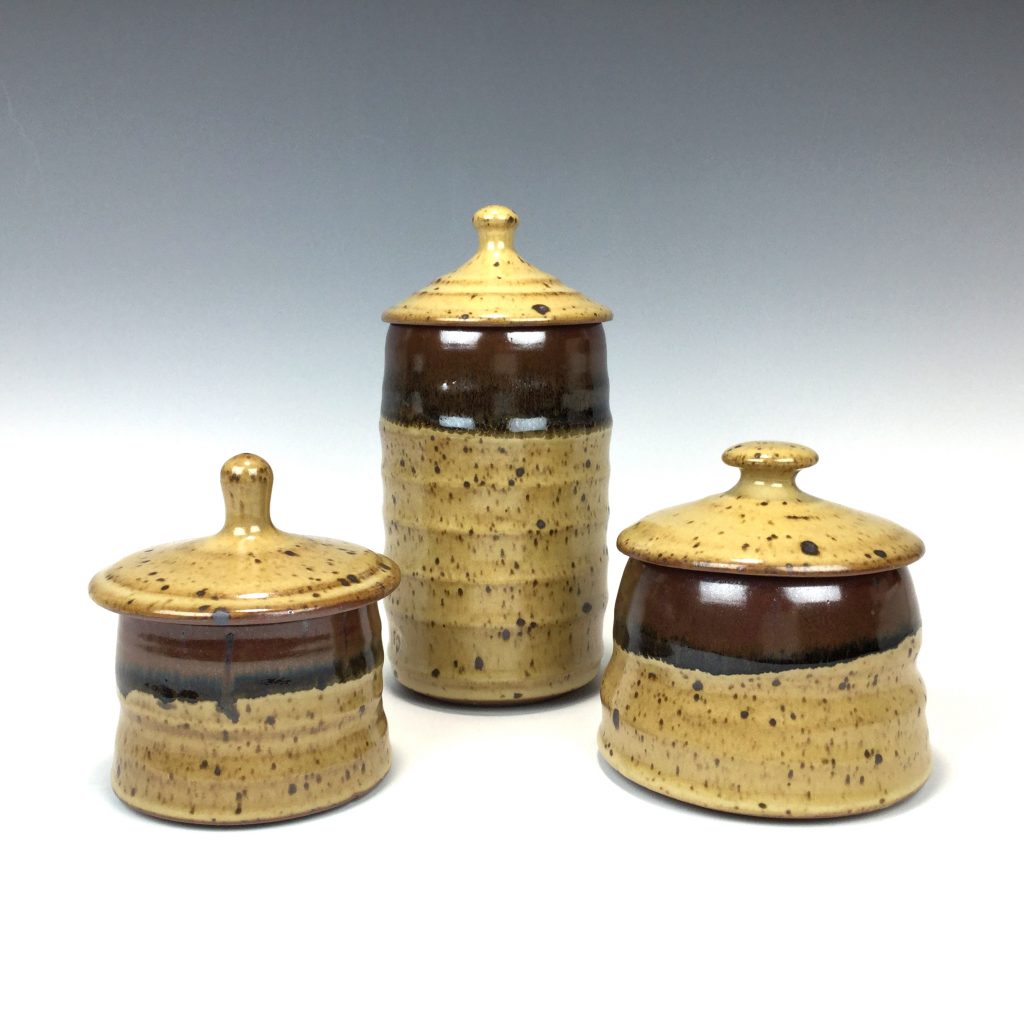
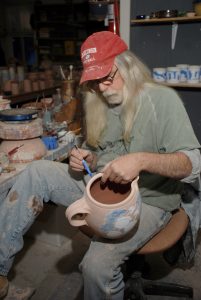 I attended Jacksonville University in Florida for six years and then Glassboro State College (Rowan University) for two years before becoming a member of the WheatonArts community in 1979. I have been a potter here for almost 42 years and have helped craft a dynamic first class pottery studio with three major kilns that serve my associates and numerous interns. Our studio is open to the public, so visitors can not only watch us work at our craft but have a personal interaction asking us any questions they may have. I produce a line of personal work firing in either a salt glaze kiln, a gas-fire, reduction glaze kiln, or in our two-chamber Noborigama style wood-fired kiln. All the ware I create is fired to over 2350 degrees F. and functional, food-safe, dishwasher safe, microwave safe, and oven-proof.
I attended Jacksonville University in Florida for six years and then Glassboro State College (Rowan University) for two years before becoming a member of the WheatonArts community in 1979. I have been a potter here for almost 42 years and have helped craft a dynamic first class pottery studio with three major kilns that serve my associates and numerous interns. Our studio is open to the public, so visitors can not only watch us work at our craft but have a personal interaction asking us any questions they may have. I produce a line of personal work firing in either a salt glaze kiln, a gas-fire, reduction glaze kiln, or in our two-chamber Noborigama style wood-fired kiln. All the ware I create is fired to over 2350 degrees F. and functional, food-safe, dishwasher safe, microwave safe, and oven-proof.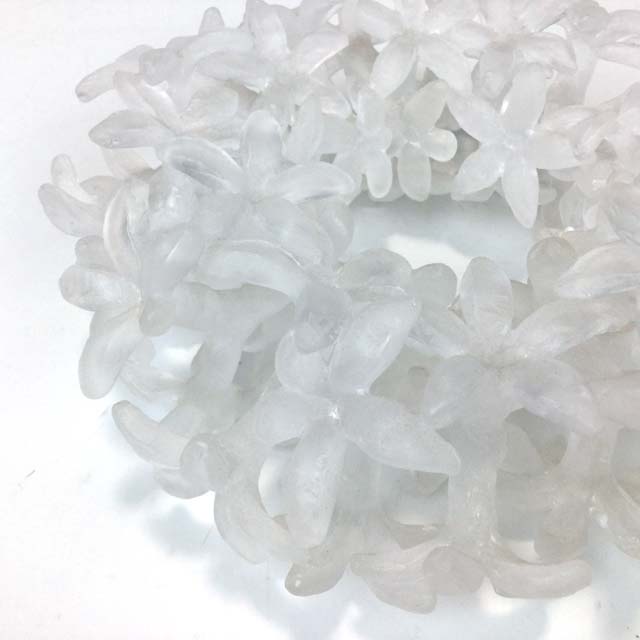
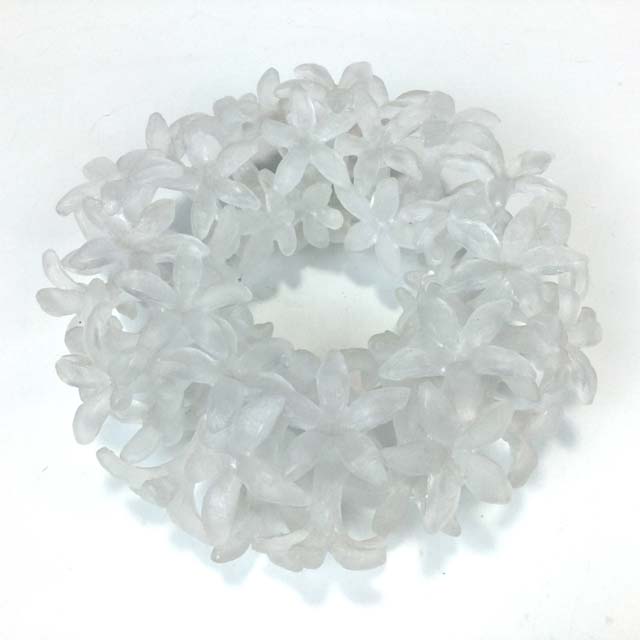
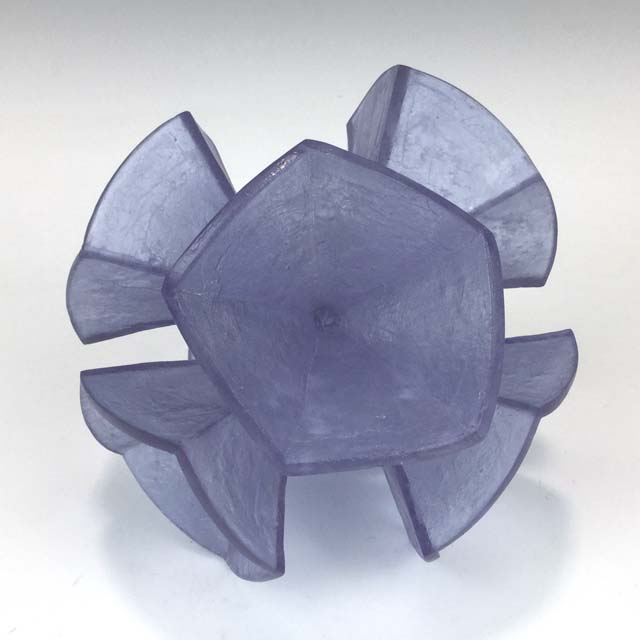

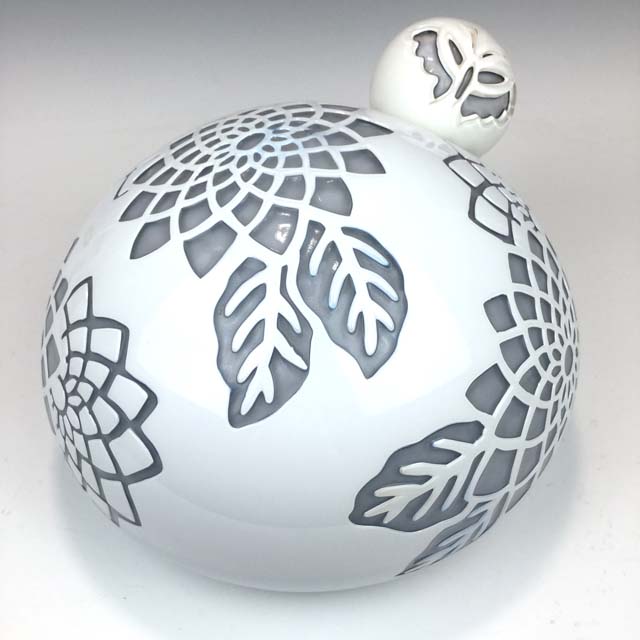
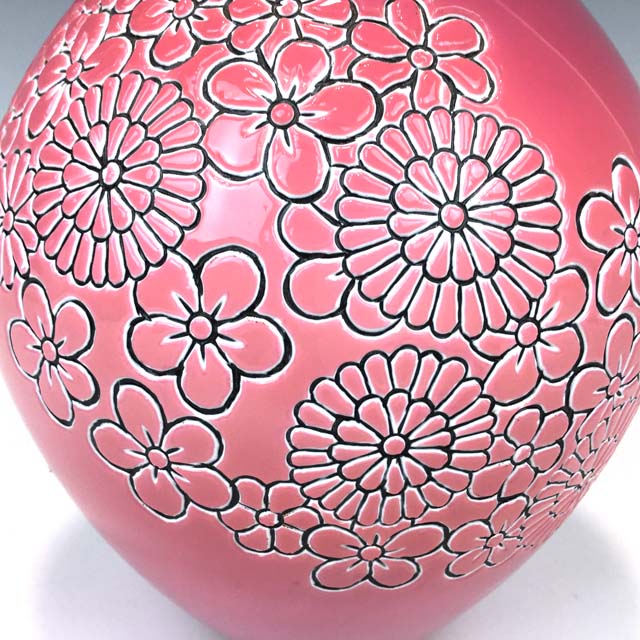
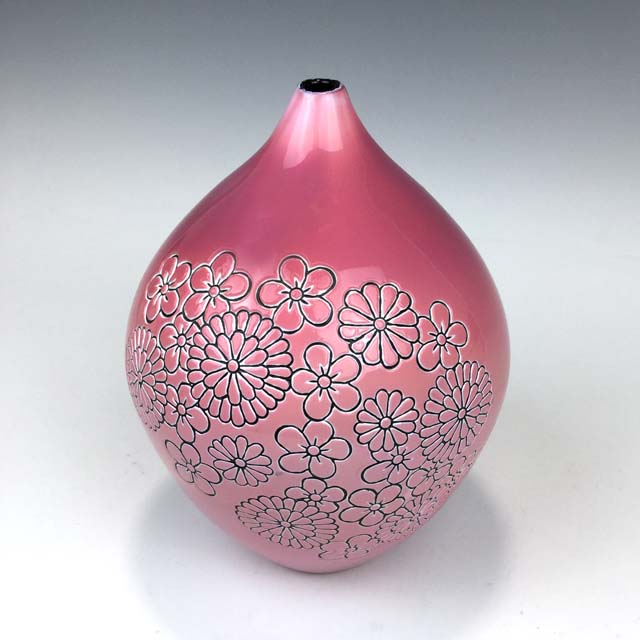
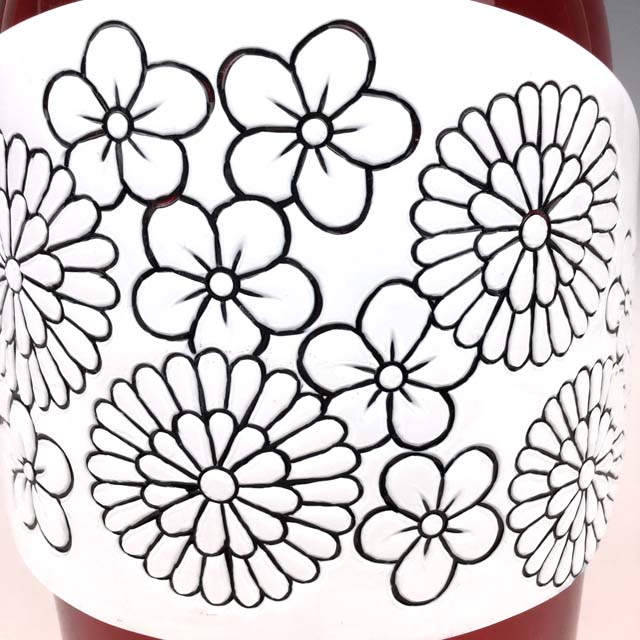

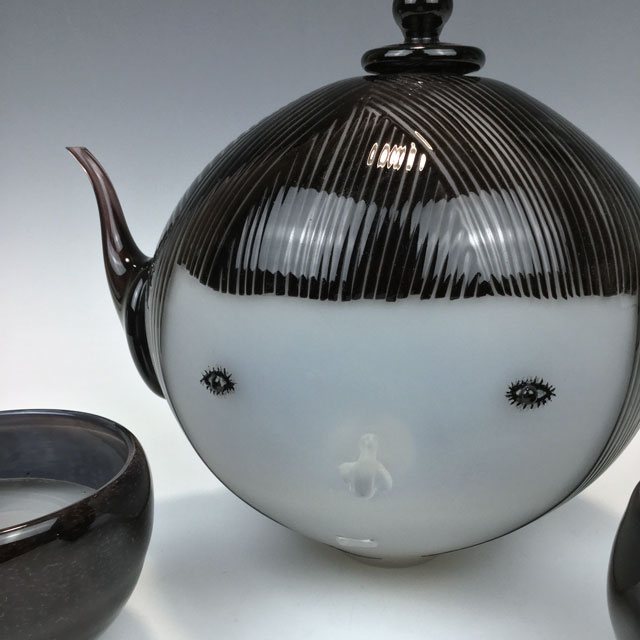

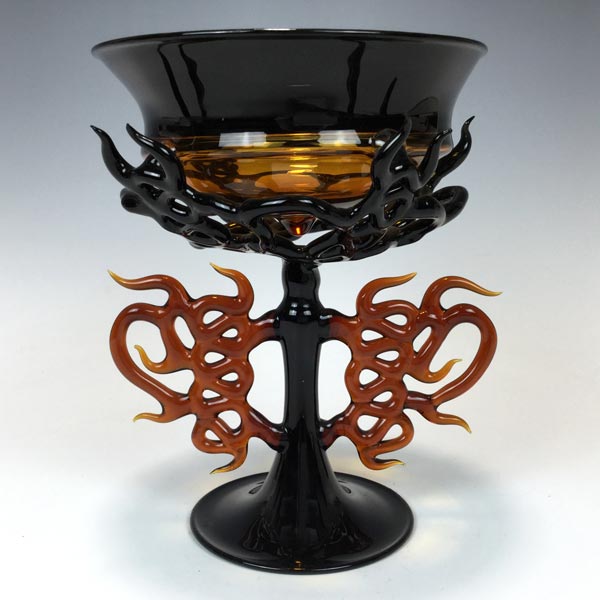
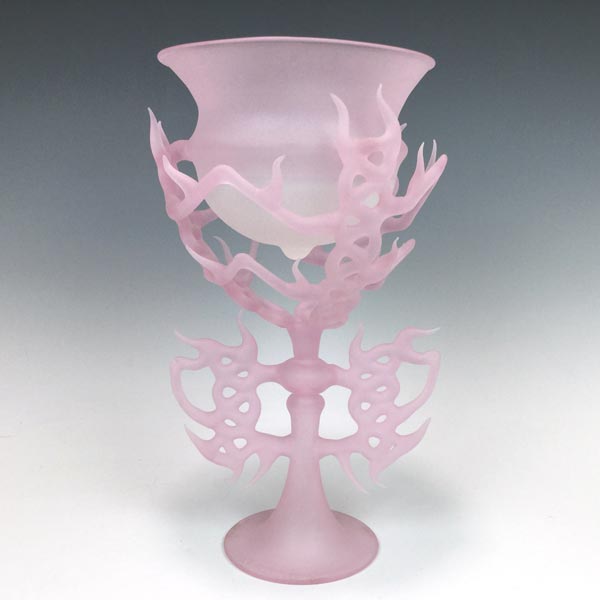

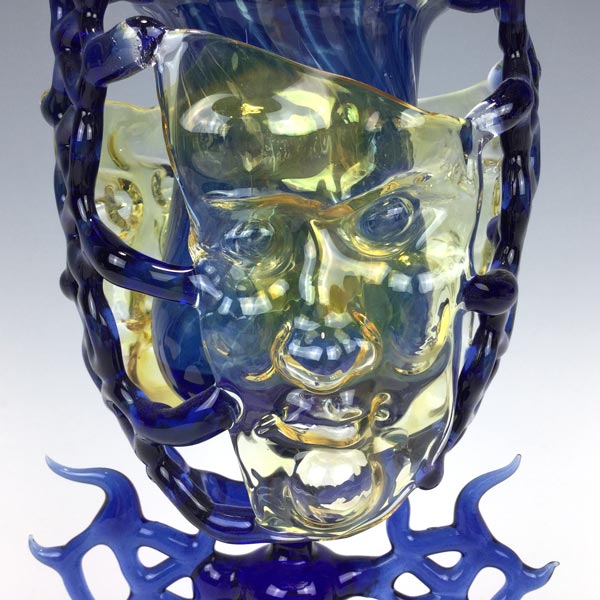

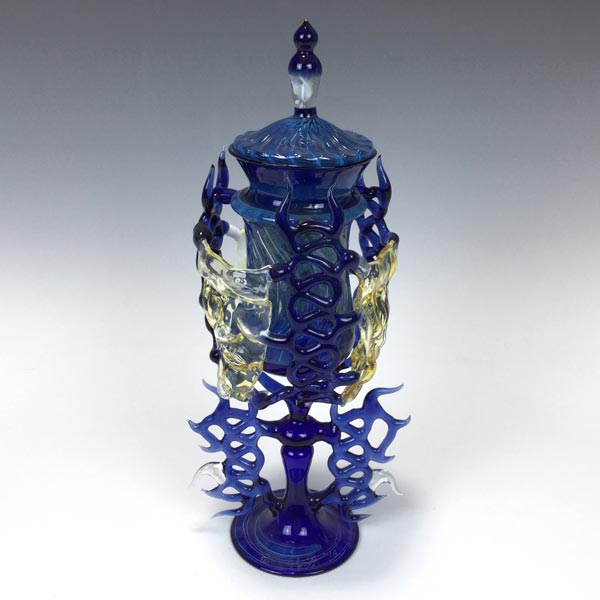



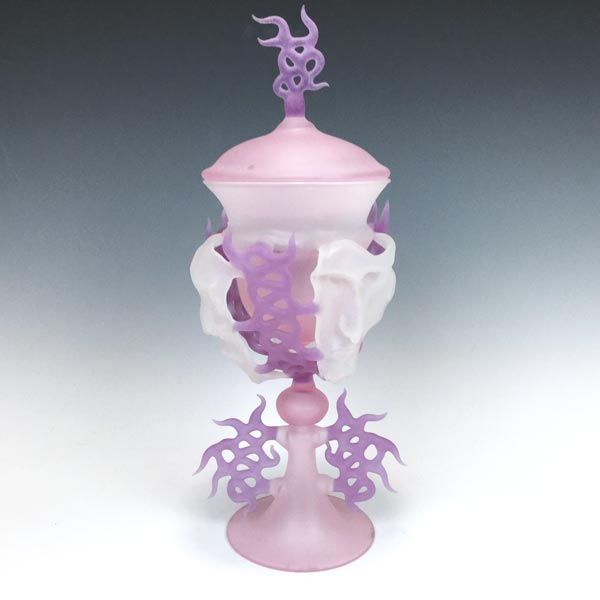
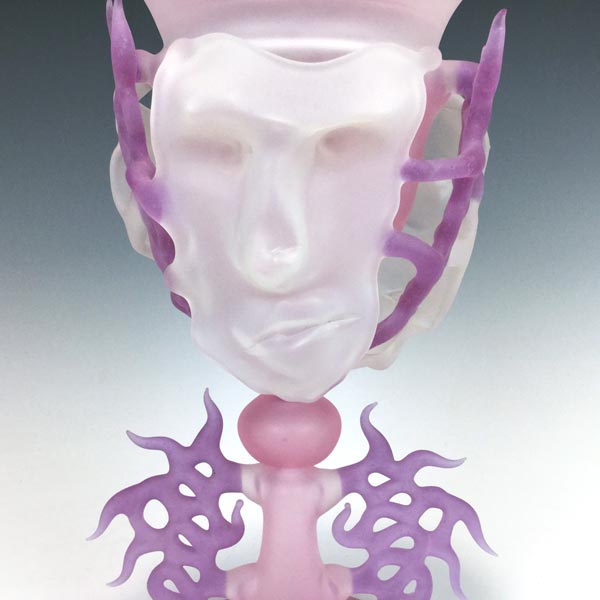

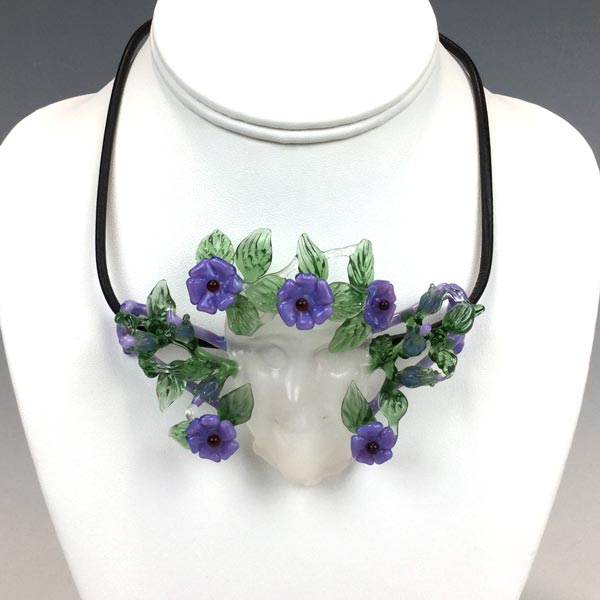
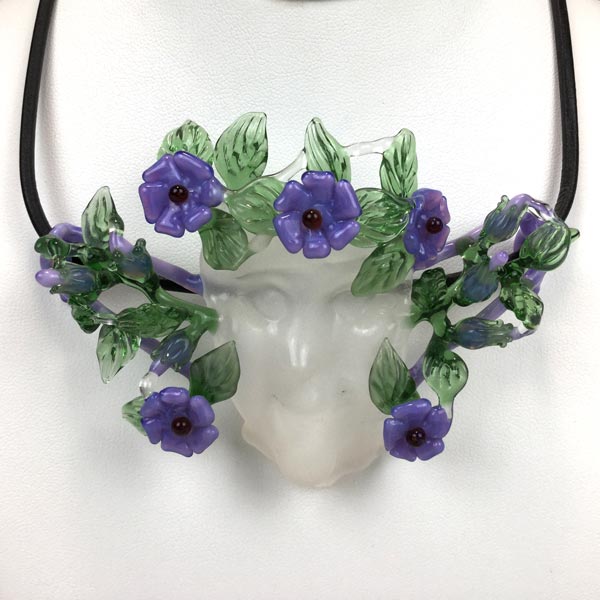
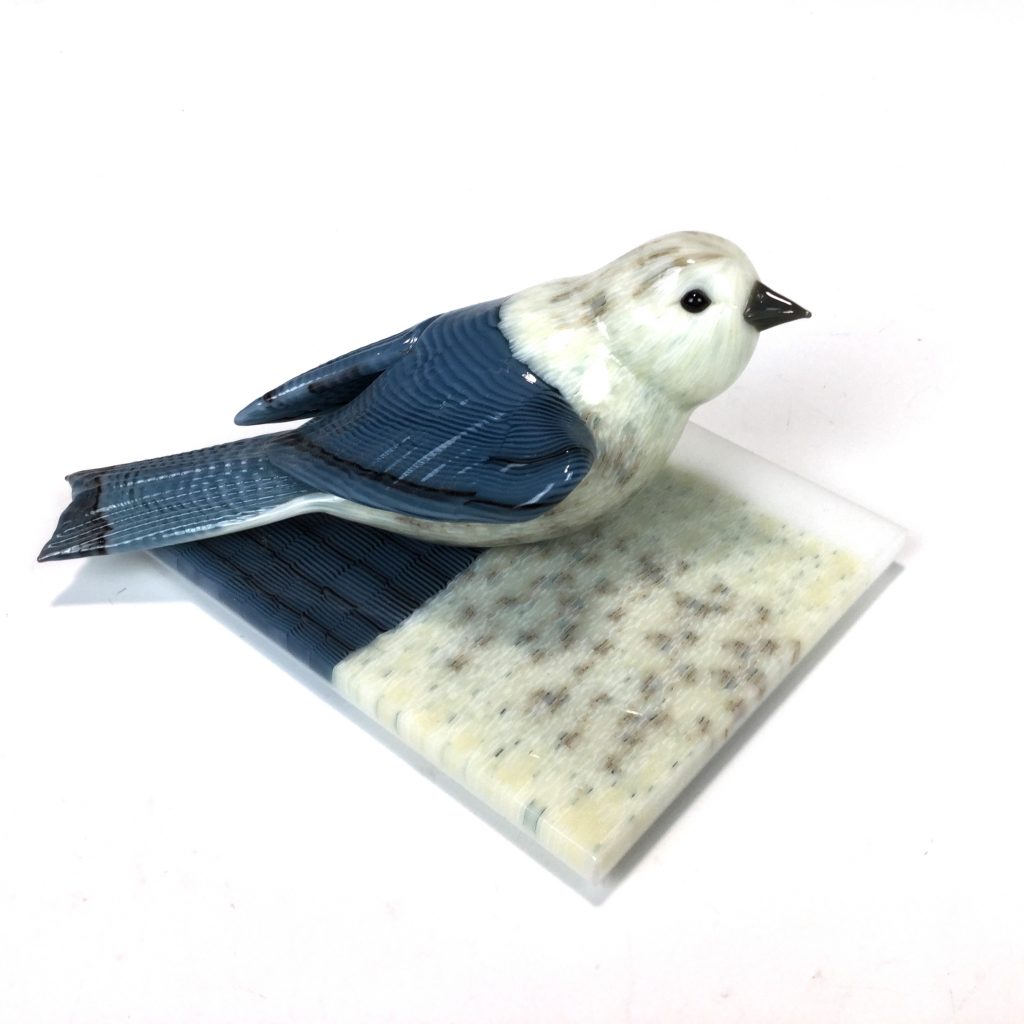
 We are all navigators—travelers on our journey between waypoints. While it is important for us to live for the journey, I am aware that we mark our lives in moments, experiences, and events. As we travel, we gather what we need, or believe we need, along the way. We collect and accumulate what is important to us, and we decide what is of value and what to believe in. Each traveler is unique. While we all float in the same ocean, we live in our own little worlds. Our geography is encompassing and universal, but at the same time, individual.
We are all navigators—travelers on our journey between waypoints. While it is important for us to live for the journey, I am aware that we mark our lives in moments, experiences, and events. As we travel, we gather what we need, or believe we need, along the way. We collect and accumulate what is important to us, and we decide what is of value and what to believe in. Each traveler is unique. While we all float in the same ocean, we live in our own little worlds. Our geography is encompassing and universal, but at the same time, individual.